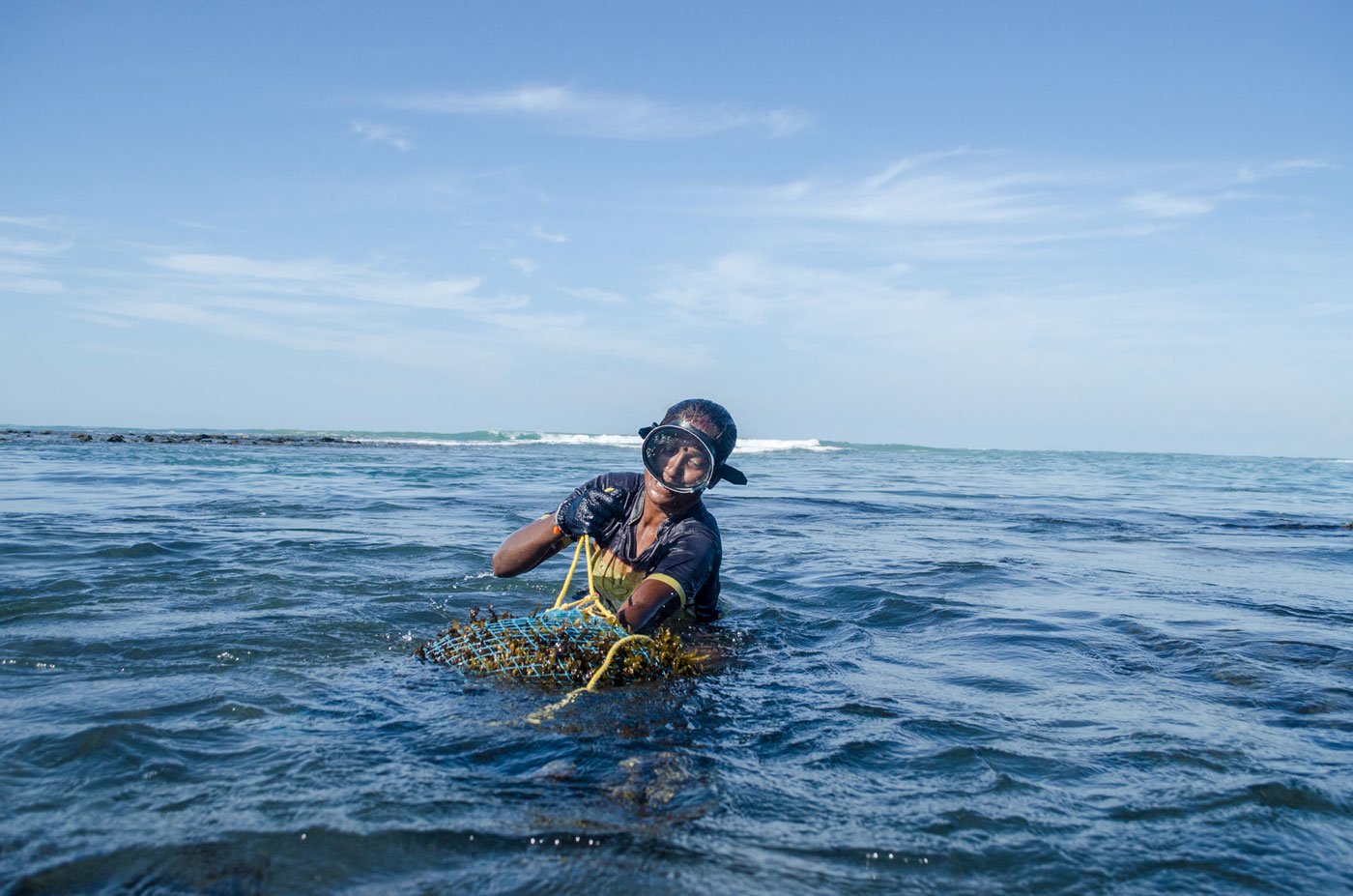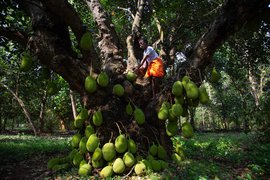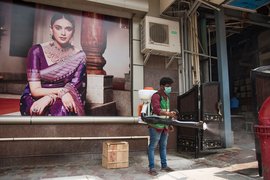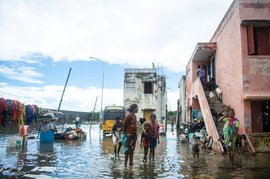This story is part of the PARI series on climate change that won the Ramnath Goenka Award for 2019 in the Environment Reporting category.
They’re up by 3 each morning. They’ve got to be at work by 5 a.m. and need to complete all their household tasks before that. The commute to their vast, wet workplace is a short walk. They just step out of their homes, stride up to the sea – and dive in.
Sometimes they take a boat to nearby islands – and dive in around those. They will do this repeatedly for the next 7-10 hours, surfacing from each dive clutching a bundle of seaweed as if their lives depended on it – as indeed they do. Diving into the waters to collect those marine plants and algae is the main source of earning for these women from the fishing hamlet of Bharathinagar in Tamil Nadu’s Ramanathapuram district.
On a working day, they carry ‘protective gear’, along with clothes and net bags. While boatmen ferry them to the islands with waters rich in seaweed, the women tie their sarees dhoti-style between their legs, attach the net bags around their waists, and wear t-shirts atop their sarees. The ‘protection’ consists of goggles for their eyes, strips of cloth wound around their fingers or surgical gloves for some, and rubber slippers to prevent their feet from being cut on sharp rocks. These they use, whether just offshore or around the islands.
Seaweed harvesting is a traditional occupation passed on from mother to daughter through the generations in this region. For some single and destitute women, it is the only source of income.
An income that is dwindling as the seaweed gets less and less, a fallout of warming, rising sea levels, changing weather and climate, and overexploitation of this resource.
“The growth of seaweed has drastically fallen,” says P. Rakkamma, 42. Like the other women harvesters at work here, she is from Bharathinagar, which is near Mayakulam village of Thiruppullani block. “We do not find the same amount of it as we used to earlier. It now sometimes gives us work for only 10 days in a month.” Given that there are only five months in a year when there is systematic harvesting by the women, that’s a blow. Rakkamma feels the “waves have become stronger and sea levels have risen from after the tsunami” of December 2004.
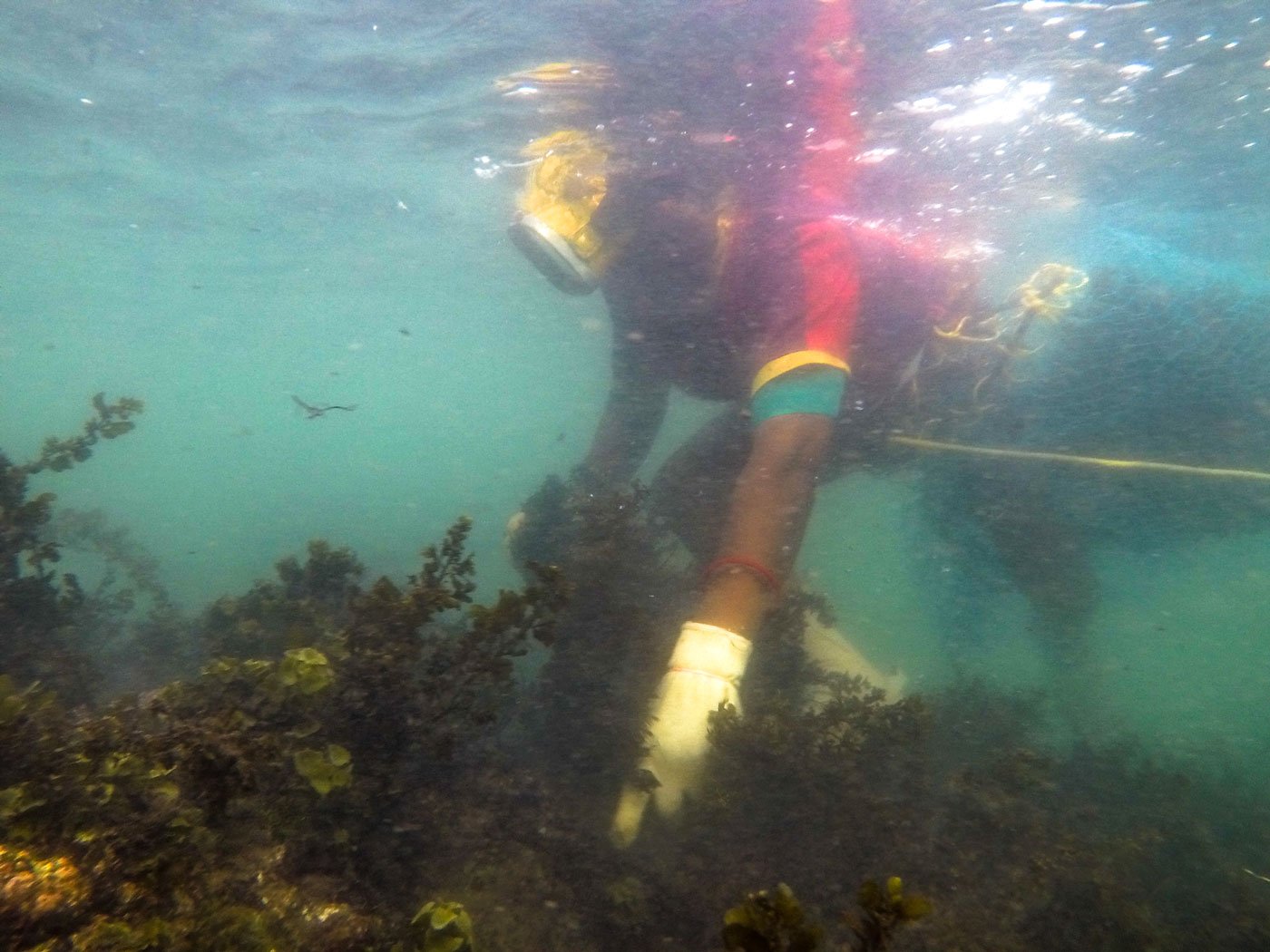
Seaweed harvesting is
a traditional occupation passed on from mother to daughter in this region; here, U.
Panchavaram is collecting seaweed from the reefs
The changes are hurting harvesters like A. Mookupori, who has been diving for seaweed since she was eight years old. Her parents died when she was very young, and she was married off by relatives to an alcoholic man. Now 35, Mookupori has three daughters and still lives with him, but he is in no condition to earn anything and support the family.
The sole earning member in their household, she says the “earnings from harvesting seaweed are now insufficient” to support her three daughters in studying further. Her eldest child is working towards a B. Com degree. The second one is awaiting admission to a college. The youngest is in Class VI. Mookupori fears things “are not going to improve” soon.
She and her fellow harvesters are Muthuraiyars, categorised in Tamil Nadu as a Most Backward Community (MBC). A. Palsamy, president of the Ramanathapuram Fish Workers’ Union, estimates there are no more than 600 women seaweed harvesters across Tamil Nadu’s 940-kilometre coastline. But the work they do, serves a much larger population not confined to the state.
“The seaweed we harvest,” P. Raniamma, 42, explains, “goes into the manufacture of agar.” That is a gelatinous substance which is used as a thickener in foods.
The seaweed from here is also used in the food industry, as an element in some fertilisers, by pharma companies in medicinal preparations, and for other purposes too. The women harvest and dry the seaweed that is later sent to factories in Madurai district to be processed. This region has two major varieties – mattakorai ( gracilaria ) and marikozhunthu ( gelidium amansii ). Gelidium is sometimes served as a part of salads, puddings and jams. It is believed to be helpful to those who are dieting and is sometimes used to treat constipation. Mattakorai ( graciliaria ) is used in fabric dyeing, among other industrial purposes.
But the popularity of seaweed in such a wide array of industries has also led to its overexploitation. The Central Salt and Marine Chemicals Research Institute (Mandapam Camp, Ramanathapuram) has pointed out that unregulated harvesting has led to a drastic fall in its availability.
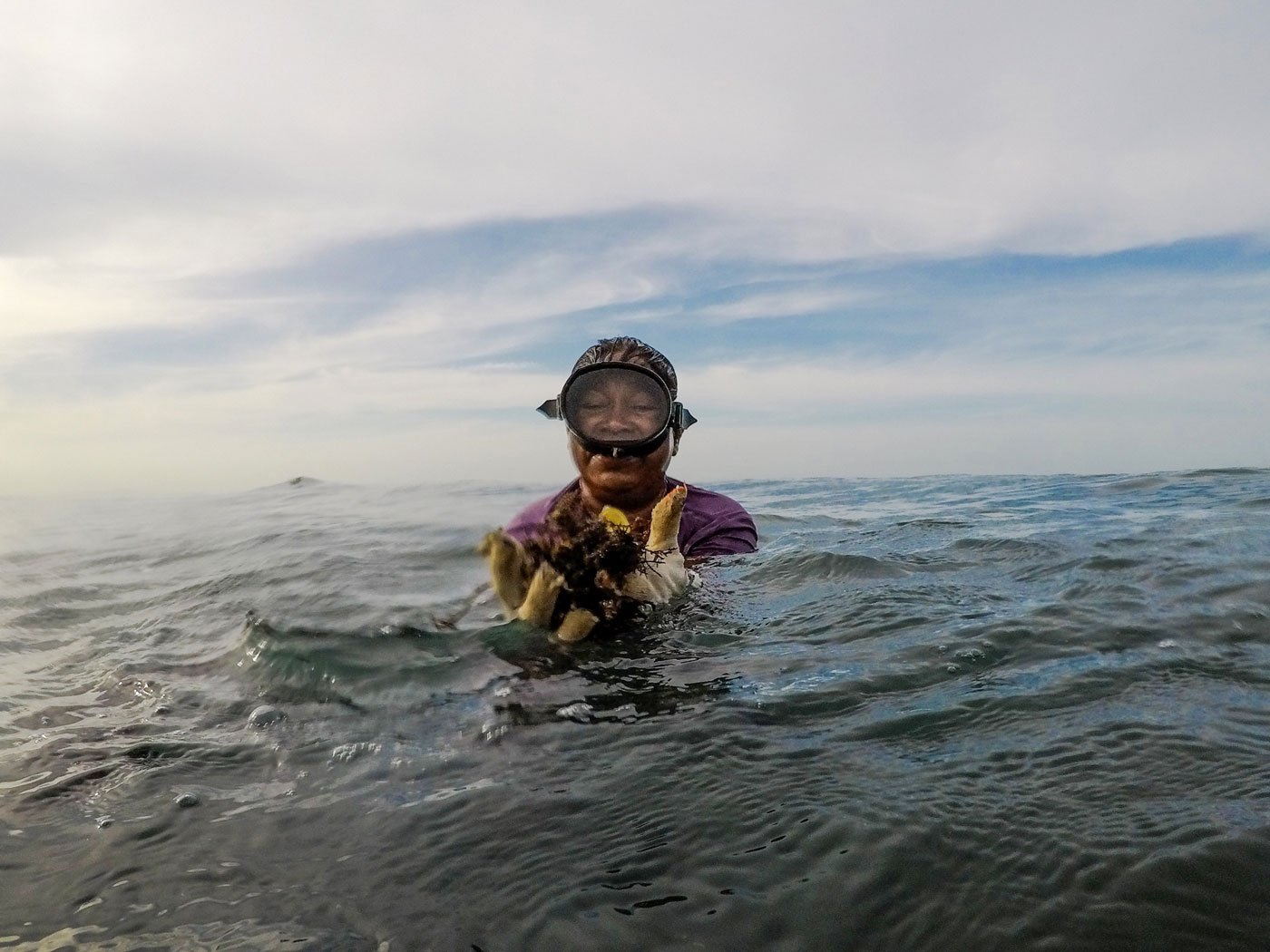
P. Raniamma with
her harvest of
marikozhunthu
, a small edible seaweed variety
The yields reflect that fall. “Five years ago, we used to harvest at least 10 kilograms of marikozhunthu in seven hours,” says S. Amritham, 45. “But now, no more 3 to 4 kilos in a day. Also, the size of the seaweed has reduced over the years.”
The industry around it has shrunk too. As late as 2014, there were 37 agar units in Madurai, says A. Bose who owns a seaweed processing company in that district. Today, he says, there are just about 7 – and those are functioning at 40 per cent of their capacity. Bose used to be president of the All-India Agar and Alginate Manufacturers Welfare Association – a body dysfunctional for the last two years because of a shortage of members.
“The number of days we get work has reduced,” says M. Mariamma, 55, who has been diving for seaweed for over four decades. “We do not have any other job opportunities during the off-season.”
When Mariamma was born, in 1964, Mayakulam village could expect 179 days in a year when temperatures would reach 38 degrees Celsius or higher. In 2019, that would be 271 such hotter days – an over 50 per cent increase. In the next 25 years, the region could see between 286 and 324 such days, according to a calculation from an interactive tool on climate and global warming posted online by the New York Times this July. There is little doubt that the seas, too, are warming.
All this has an impact on something beyond just the fisherwomen of Bharathinagar. The latest report of the Intergovernmental Panel on Climate Change (IPCC) mentions, without endorsing, studies that view seaweed as a potentially important factor in mitigating climate stress. The report itself concedes that: “Seaweed aquaculture warrants further research attention."
Prof. Tuhin Ghosh of the School of Oceanographic Studies at Jadavpur University, Kolkata, was one of the lead authors of that report. His views seem to validate what the fisherwomen are saying about a decline in their yields. “It is not only seaweed, but a host of other processes that are declining or gaining pace [like migration],” he told PARI on the phone. “That would be true of fish yields , prawn seed yields, and several things connected to both seas and land, including crab collection, honey collection, migrations ( as seen in the Sundarbans ) and more.”
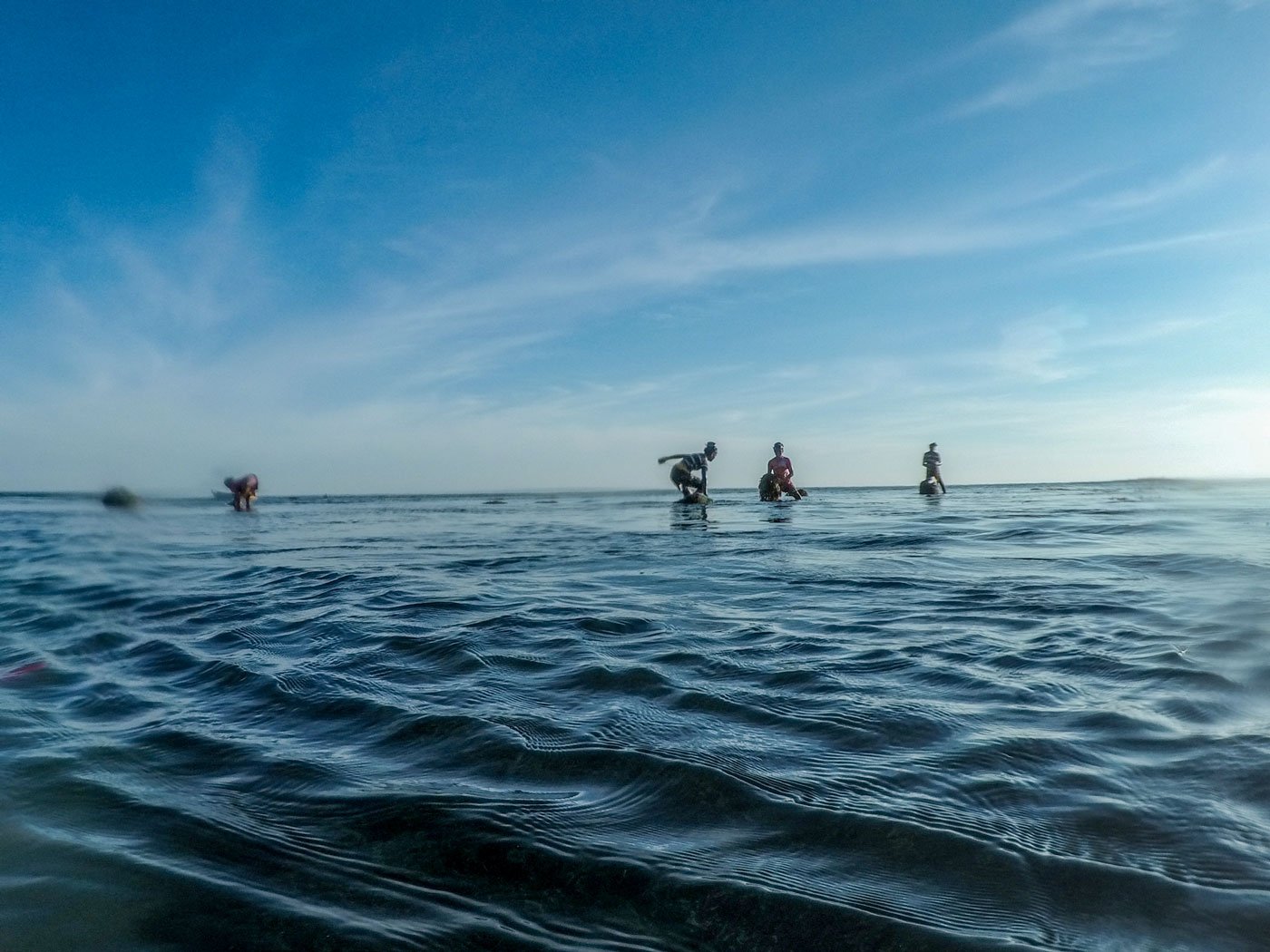
Sometimes, from here,
the women take a boat to nearby islands to dive in from there
What the fishing communities are saying, Prof. Ghosh says, has substance. “However, in the case of fish, it is not just a matter of changing climate – but also the severe overexploitation by trawlers and industrial-scale fishing. That has sharply depleted the catch in the normal channels of the traditional fisherfolk.”
While trawlers may not affect seaweed, industrial overexploitation undoubtedly does. The women of Bharathinagar and their fellow harvesters appear to have pondered their own important, if small, role in that process. Activists and researchers who have worked with them say that, worried by the shrinking yields, they held meetings among themselves and decided to restrict systematic harvesting to five months from July. Then for three months, they do not venture out to sea at all – allowing the seaweed to revive. From March to June, they do harvest but only for very few days in a month. Simply put, the women have created their own self-regulatory regime.
That is a thoughtful approach – but comes at some cost to themselves. “Fisherwomen are not given work under the Mahatma Gandhi National Rural Employment Guarantee Act (MGNREGA),” says Mariamma. “Even during the harvesting season, we hardly earn Rs.100-Rs.150 a day.” In season, each woman can collect up to 25 kilograms of seaweed a day, but the rates they get (also declining) vary according to the kind of seaweed they manage to bring back.
Changes in rules and laws have further complicated matters. Till 1980, they could go out to islands quite far off, such as Nallatheevu, Challi, Upputhanni – some of them nearly two days away by boat. They could spend up to a week on collecting seaweed before returning home. But that year, 21 of the islands they went to came under the Gulf of Mannar Marine National Park – and thereby under the jurisdiction of the Forest Department. The department denied them permission to stay on the islands and has increasingly shut off their access to these locations. Protests against that ban have not elicited any sympathetic response from government. Fearing fines that could range from Rs. 8,000-Rs. 10,000, they don’t go to the islands much anymore.
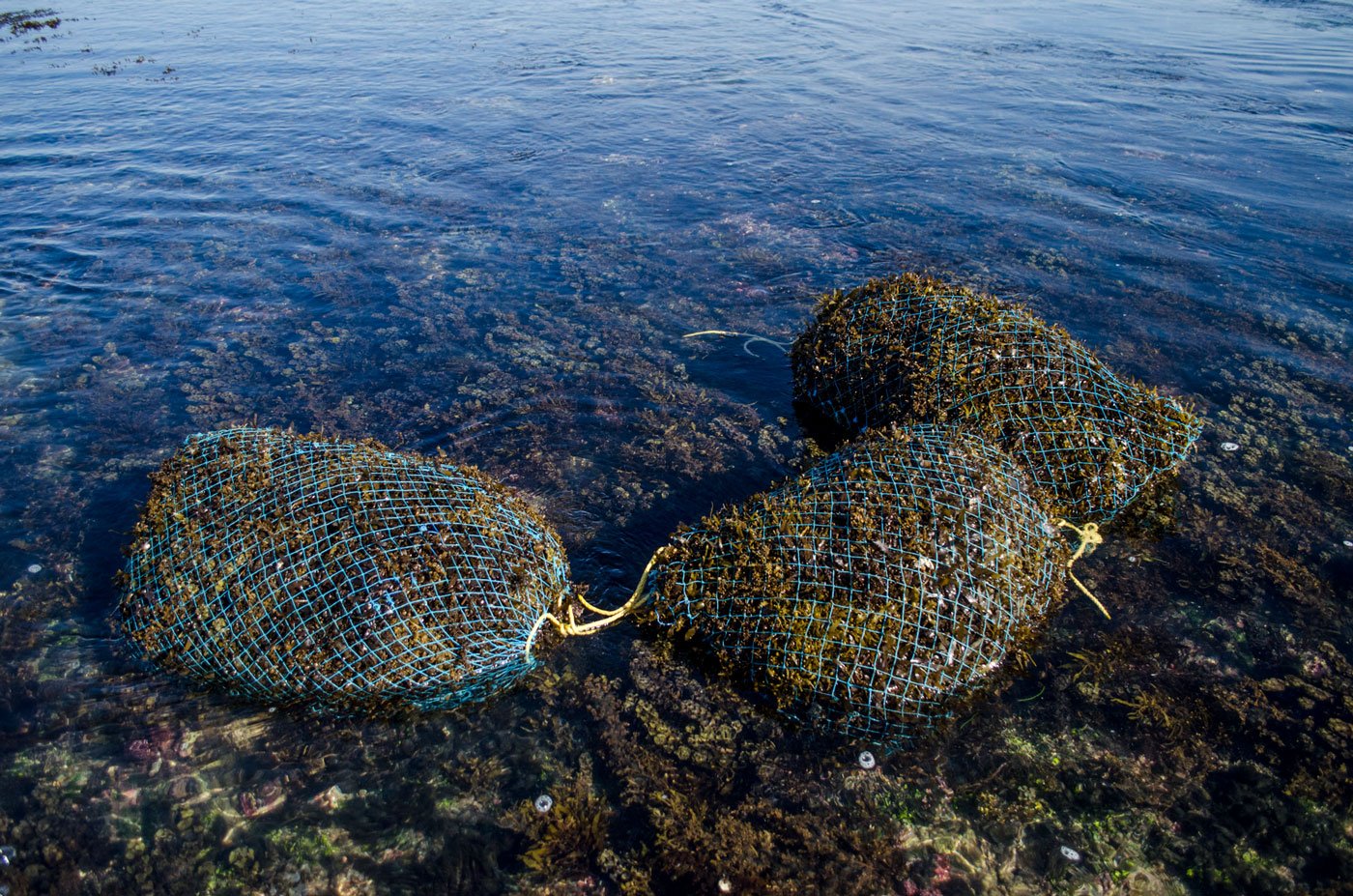
The net bags the women use to collect the seaweed; in
the process, they often bruise and bleed, but a bag full means income to
support their families
So incomes have shrunk further. “We earned at least Rs. 1,500 to Rs. 2,000 when we used to spend a week on the islands,” says S. Amritham, who has been harvesting seaweed since she was 12. “We used to get both mattakorai and marikozhunthu seaweed. Now it is hard to earn Rs. 1,000 in a week.”
The harvesters may not know of the debates around climate change, but they have experienced it and are aware of some of its impacts. They have understood that many changes are underway in their lives and occupation. They have observed and experienced the changes in the behaviour of the seas, and in temperatures, weather and climate. They have also realised something about the role of human activity (including their own) in the many changes taking place. At the same time, their only income is locked into the whole, complicated set of processes. And they know they are being given no alternatives – as Mariamma’s comment on being excluded from the MGNREGA shows.
The water levels begin to rise from noon, so they start winding up activity for the day. In a couple of hours, they’ve brought back their ‘catch’ on the boats they’ve gone out in and laid it out on shore in the net bags.
Their activity is anything but simple and not without risk. The seas are getting more difficult, and some weeks ago, four fishermen died in a storm in this region. Only three bodies were recovered, and locals believe the winds will get slower and the seas calmer only when the fourth is found as well.
As the locals would say, without the favour of the winds, all sea-related work is challenging. With changes in larger climatic conditions, too many days are unpredictable. Yet the women still venture out into the unquiet waters in search of their only source of livelihood – knowing that both figuratively and sometimes literally, they are adrift on rough seas.
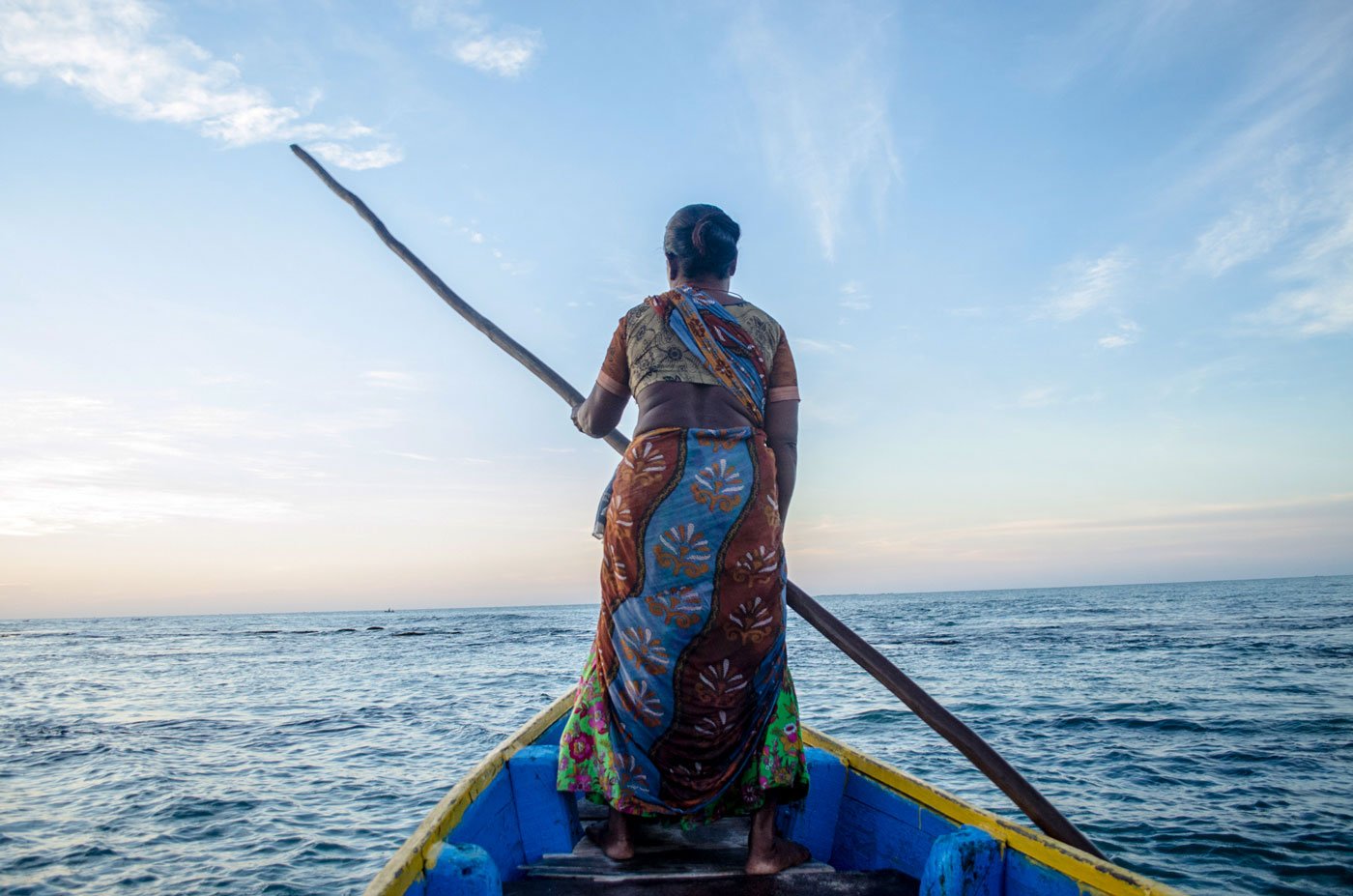
Manoeuvring the boat
into the sea to dive for seaweed: without the favour of the winds, all
sea-related work is challenging. With changes in larger climatic conditions,
too many days are unpredictable
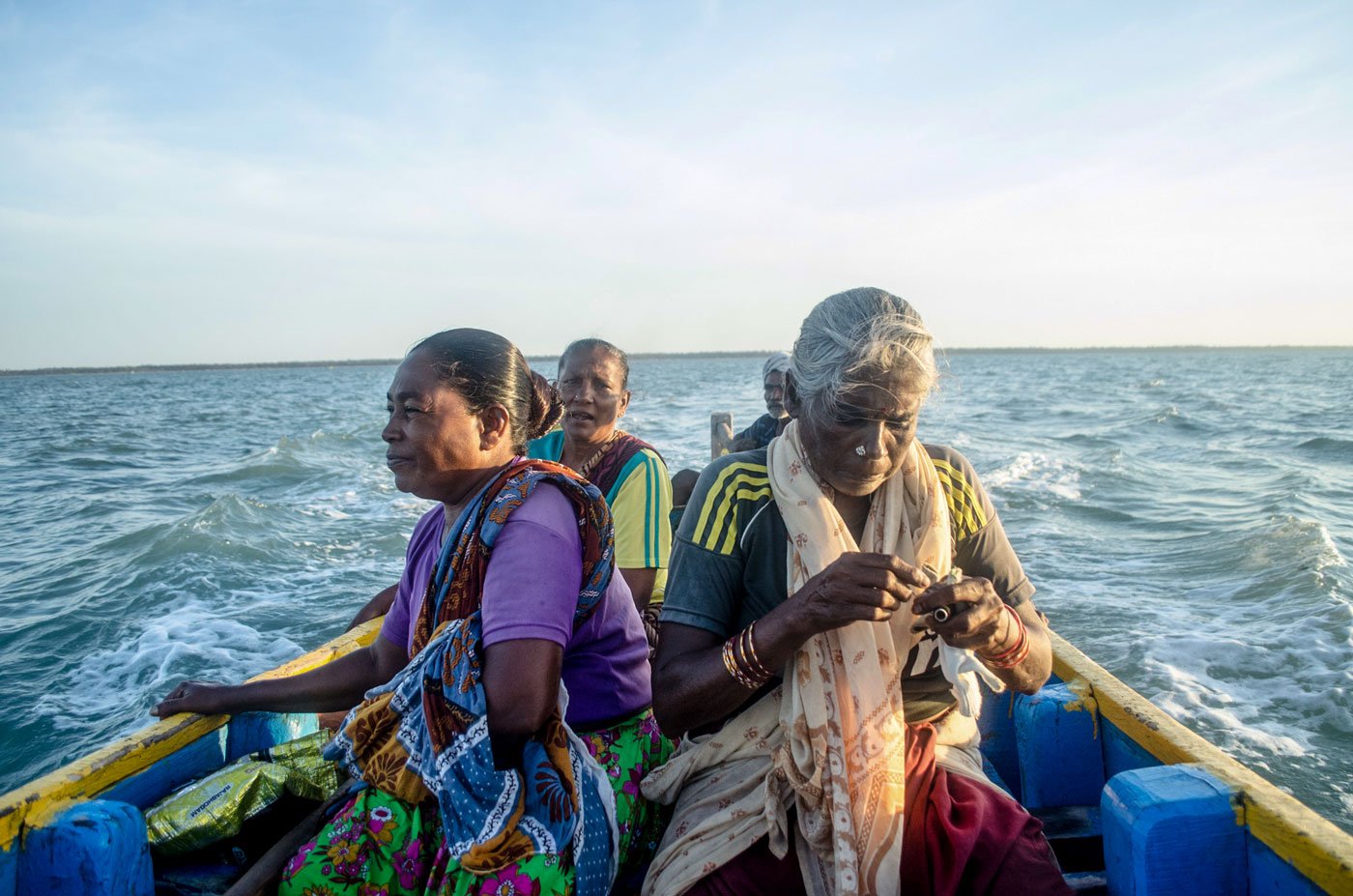
A seaweed harvester with a torn glove – flimsy
protection against the rocks and choppy waters
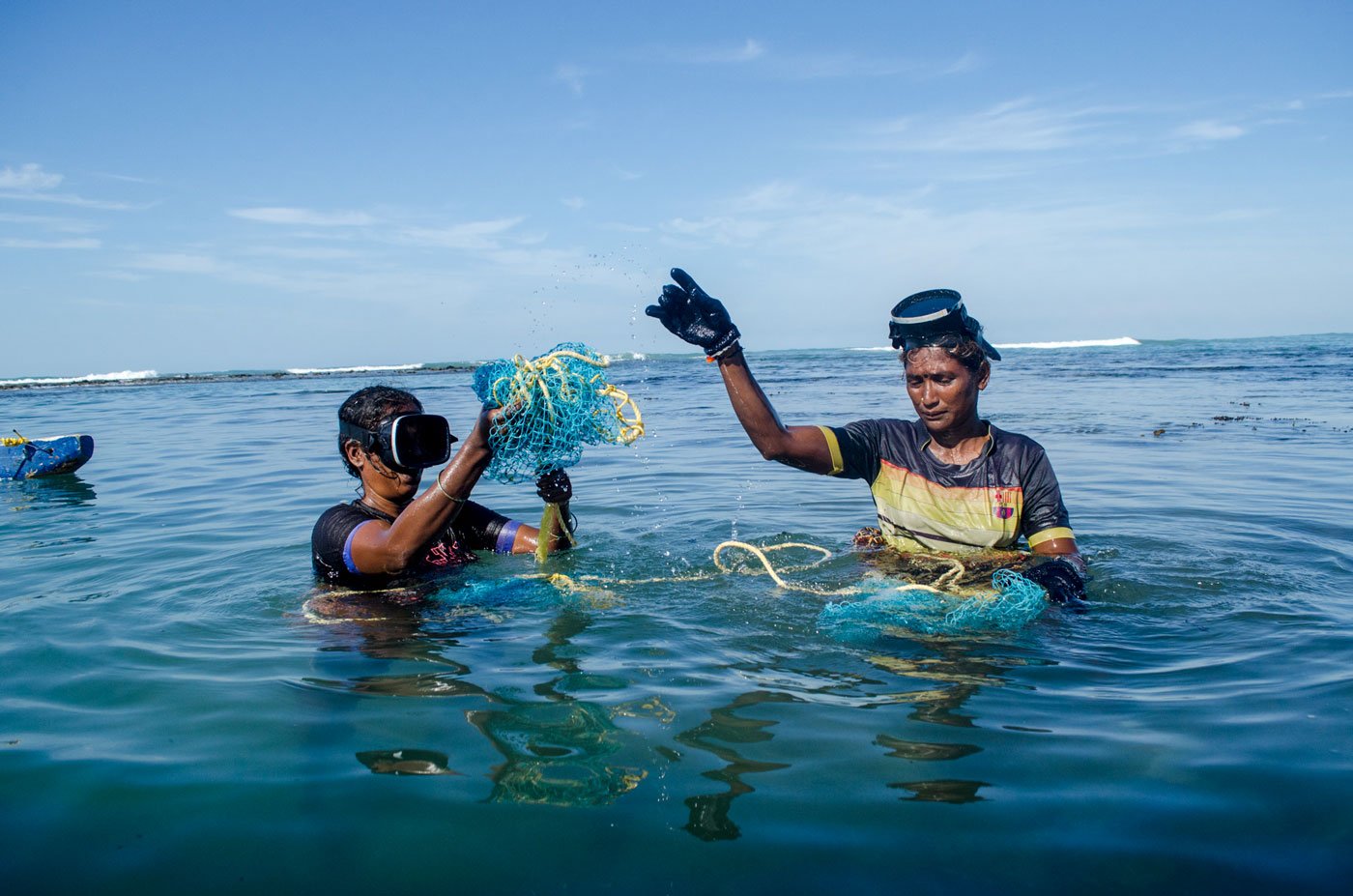
Preparing the nets: the women’s
protective gear includes goggles, strips of cloth or gloves for the hands, and rubber slippers to prevent their feet from being cut on
sharp rocks
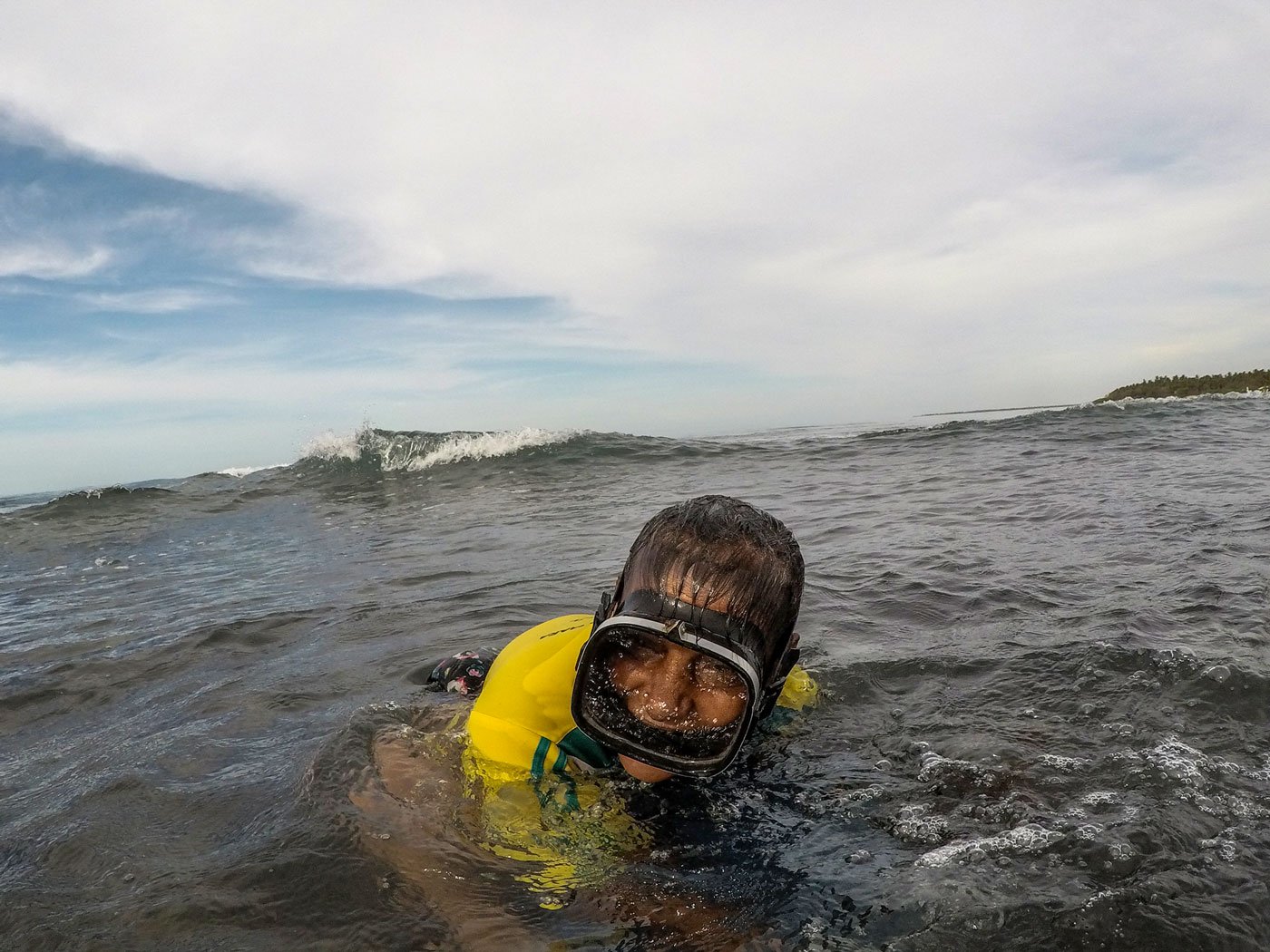
S. Amritham fighting against the strong waves, trying
to reach the reefs
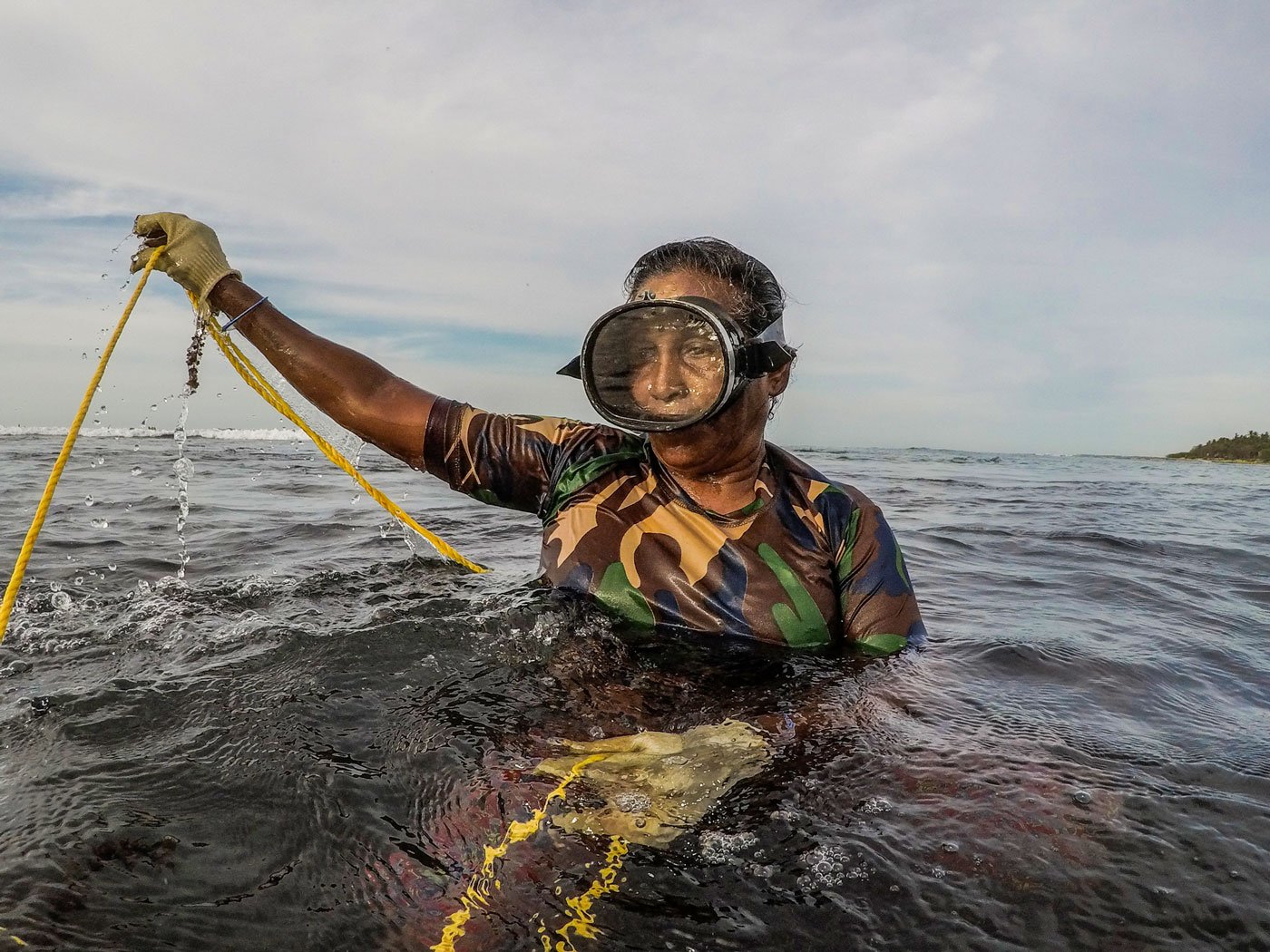
M. Mariamma tightening the rope of the net bag used
for collecting the seaweed
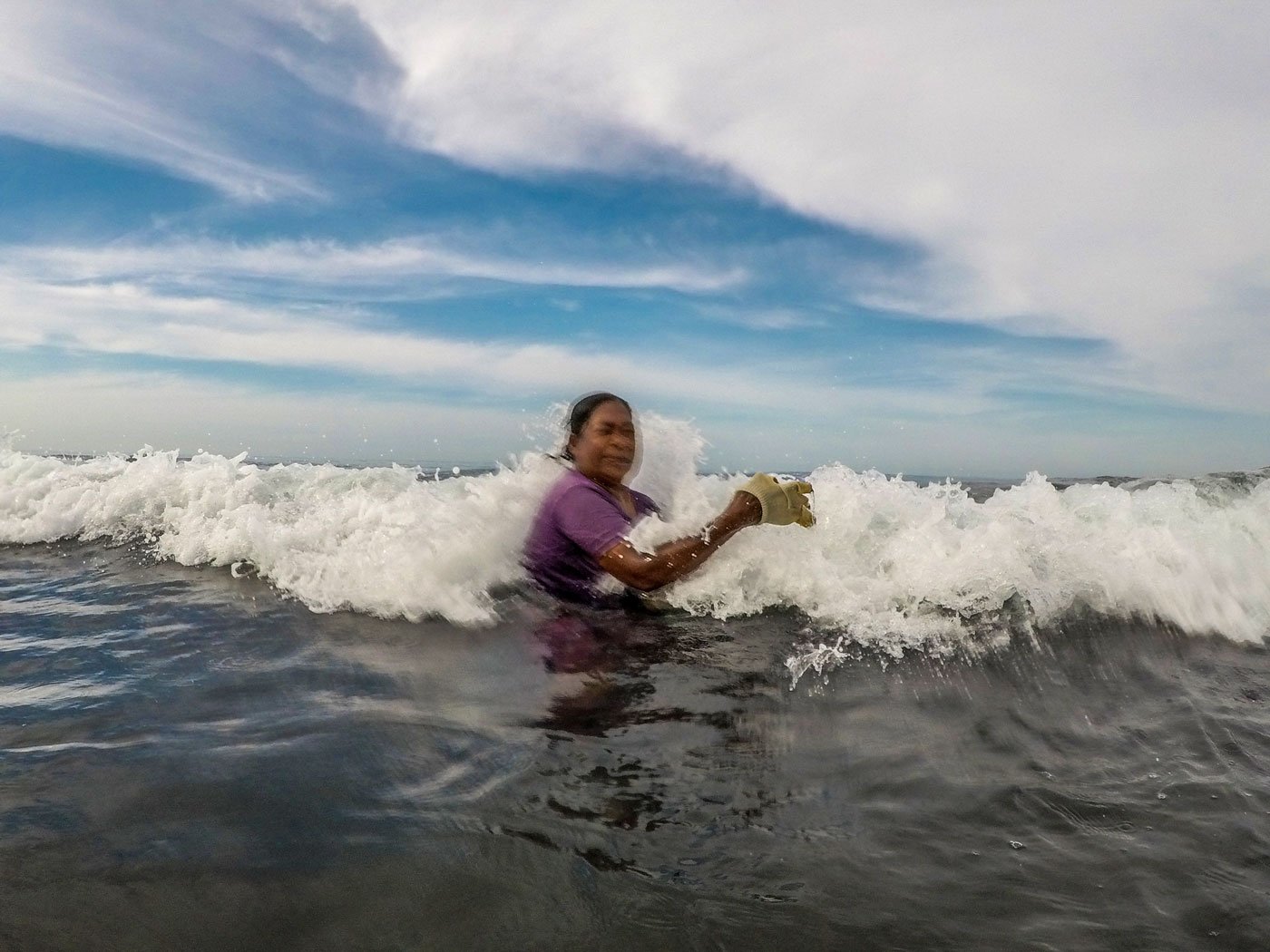
Getting ready to dive in
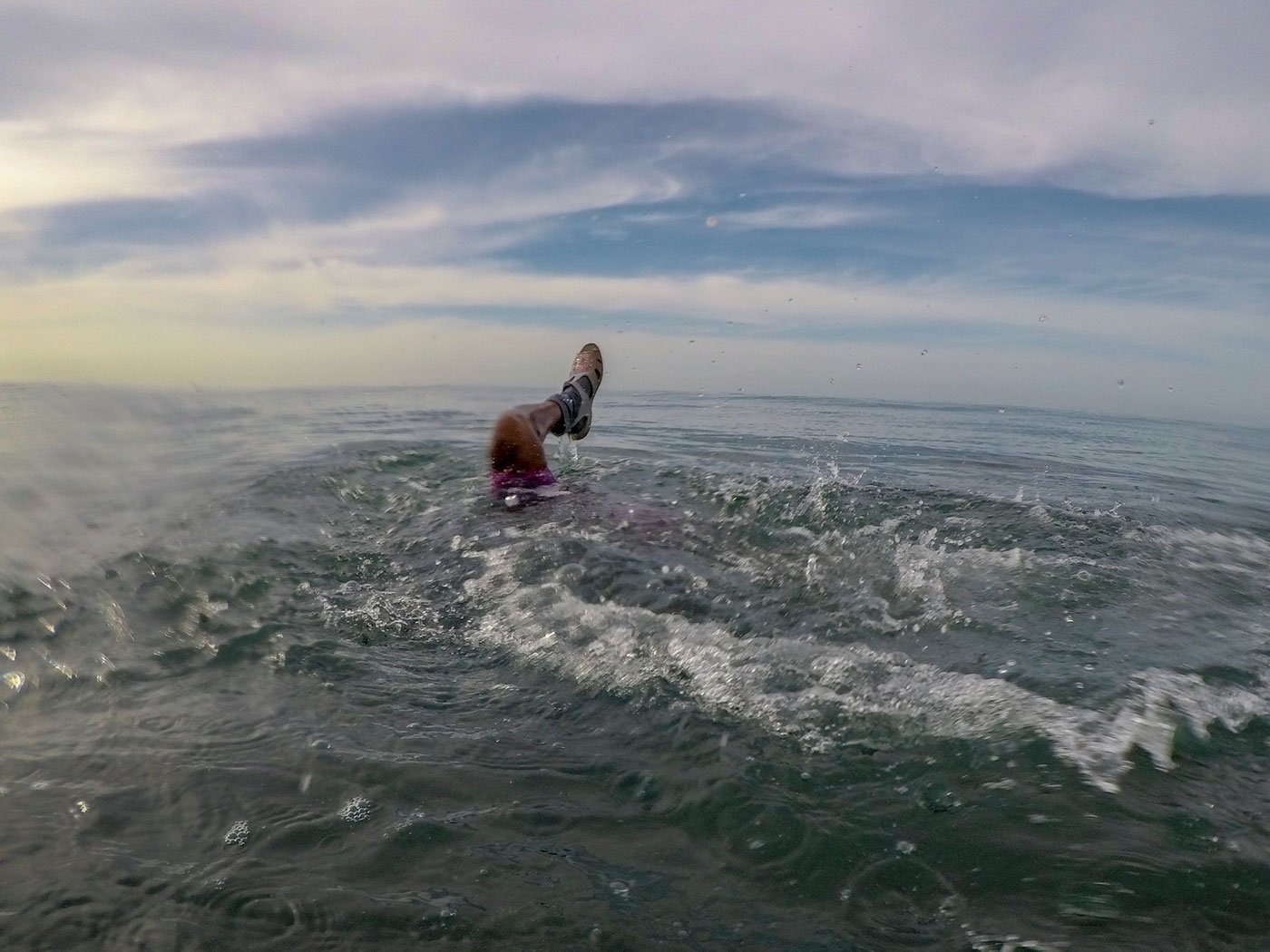
And then the dive, propelling themselves towards the sea bed
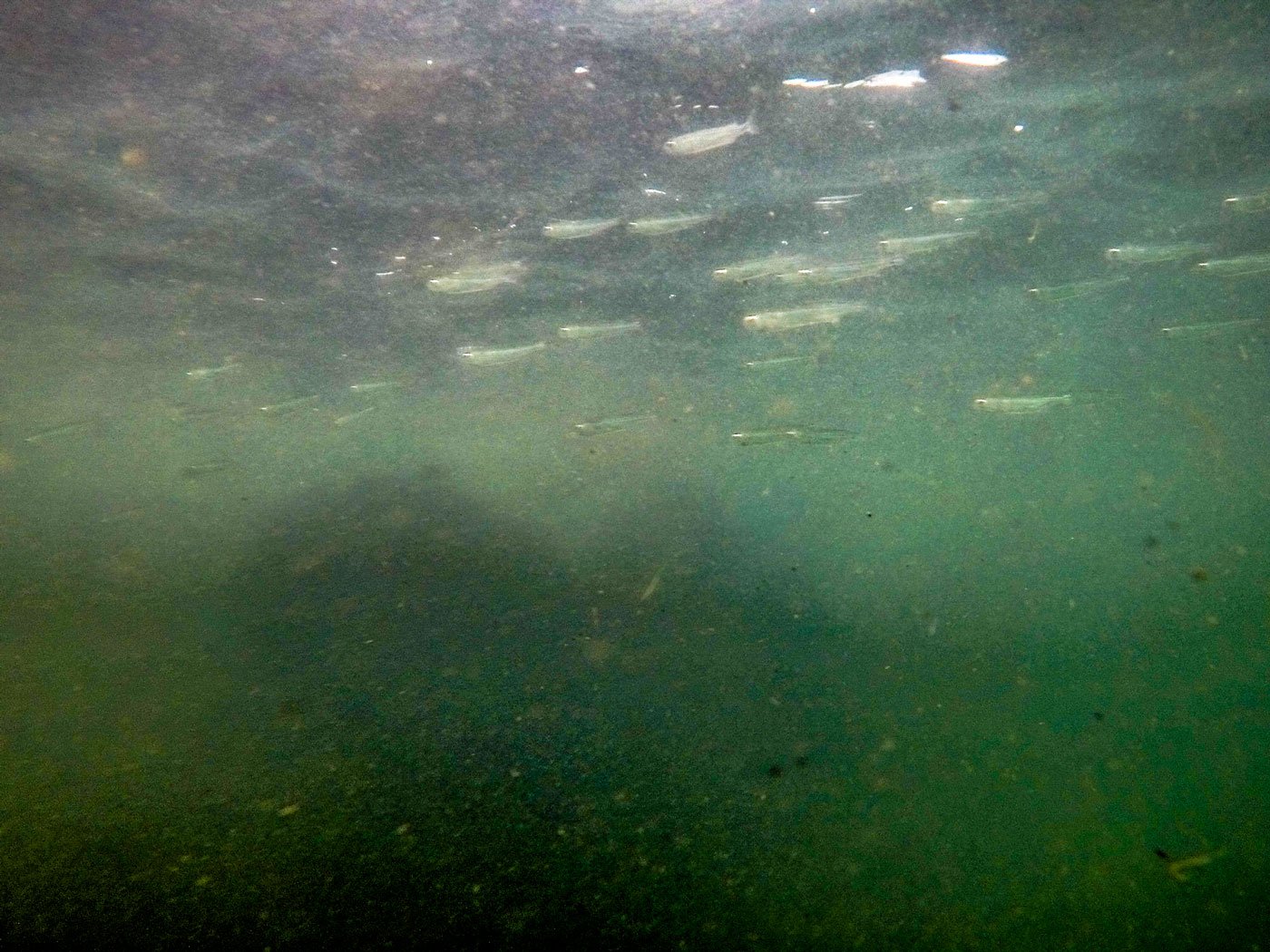
Into the deep – the women’s workplace, an
opaque underwater world of fish and sea creatures
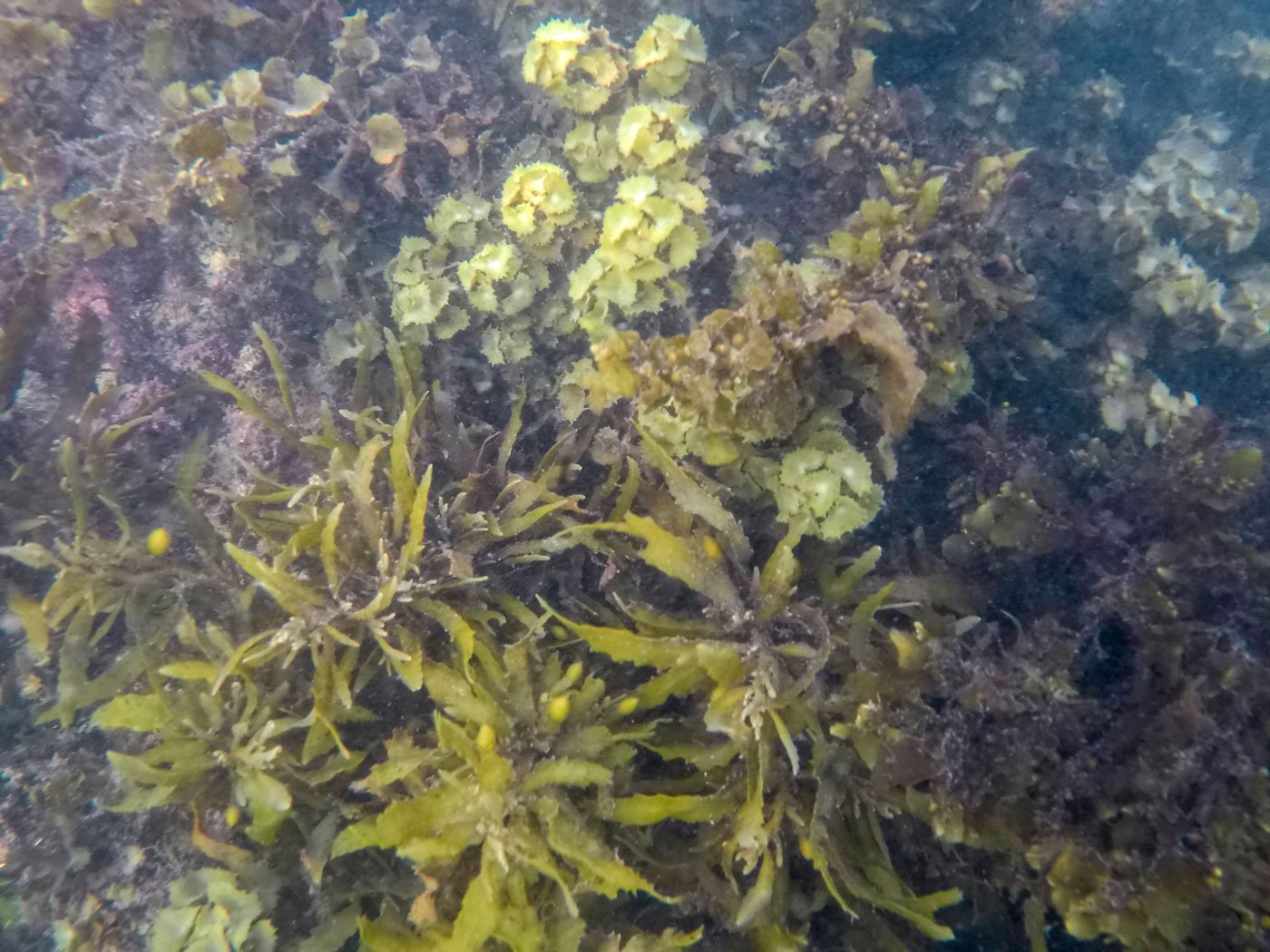
This long-leaf seaweed,
mattakorai,
is collected, dried and used for dyeing clothes
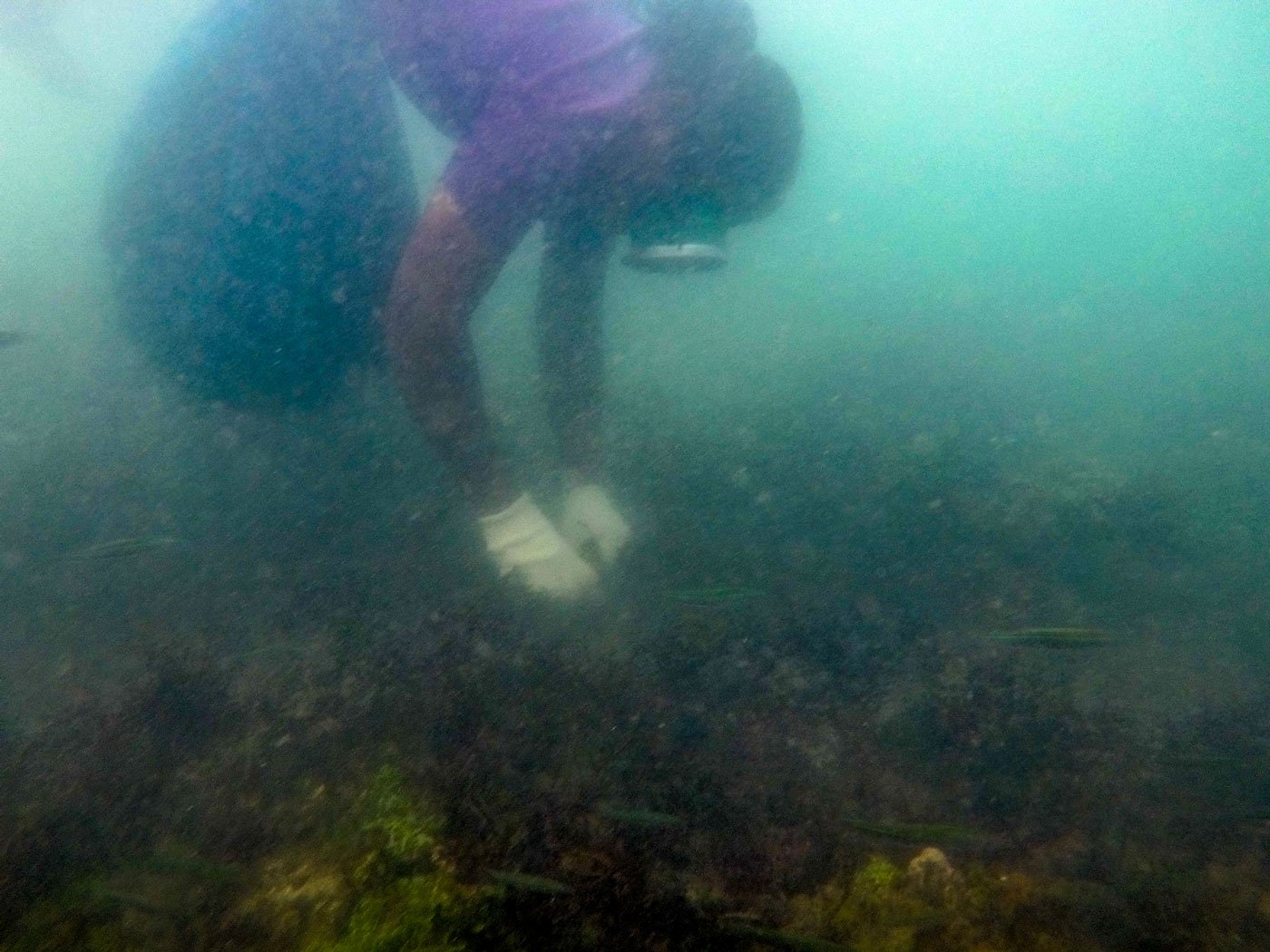
Raniamma collects
marikozhunthu
by controlling her breath for several seconds while suspended
on the sea bed
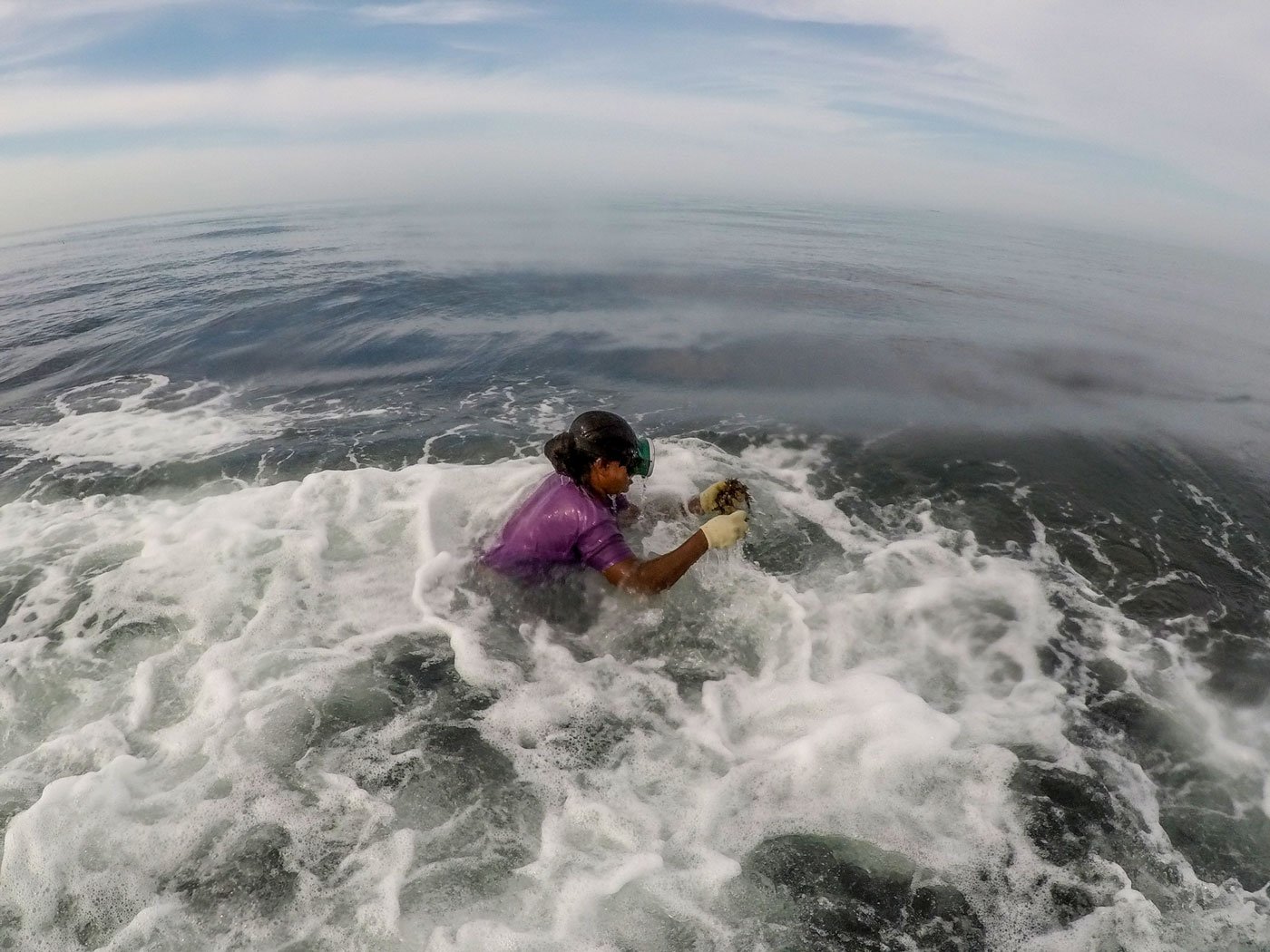
Then it’s back to the
surface, amid the choppy waves, with their hard-earned harvest
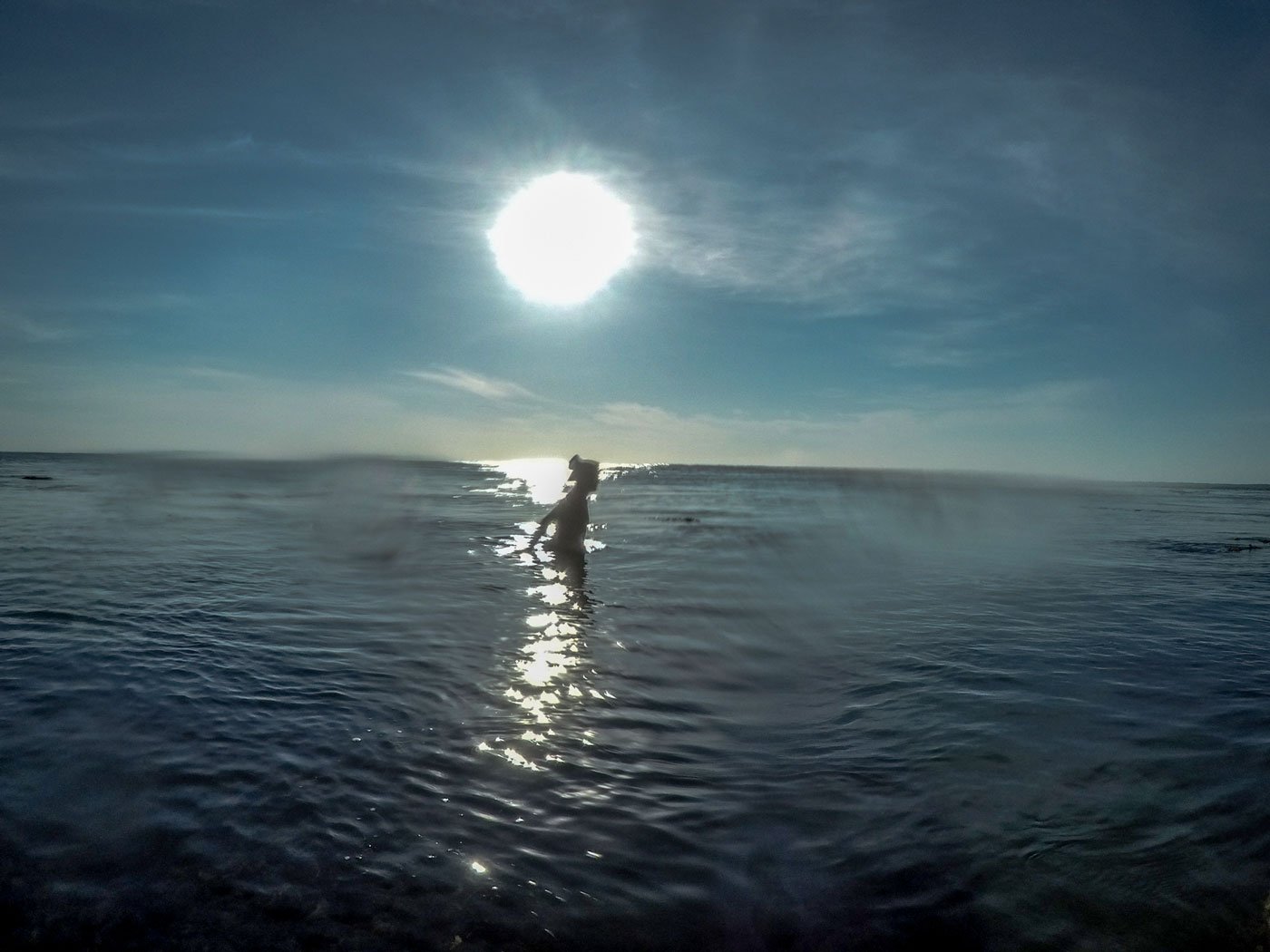
The tide is starting
to come in, but the women continue to labour till noon
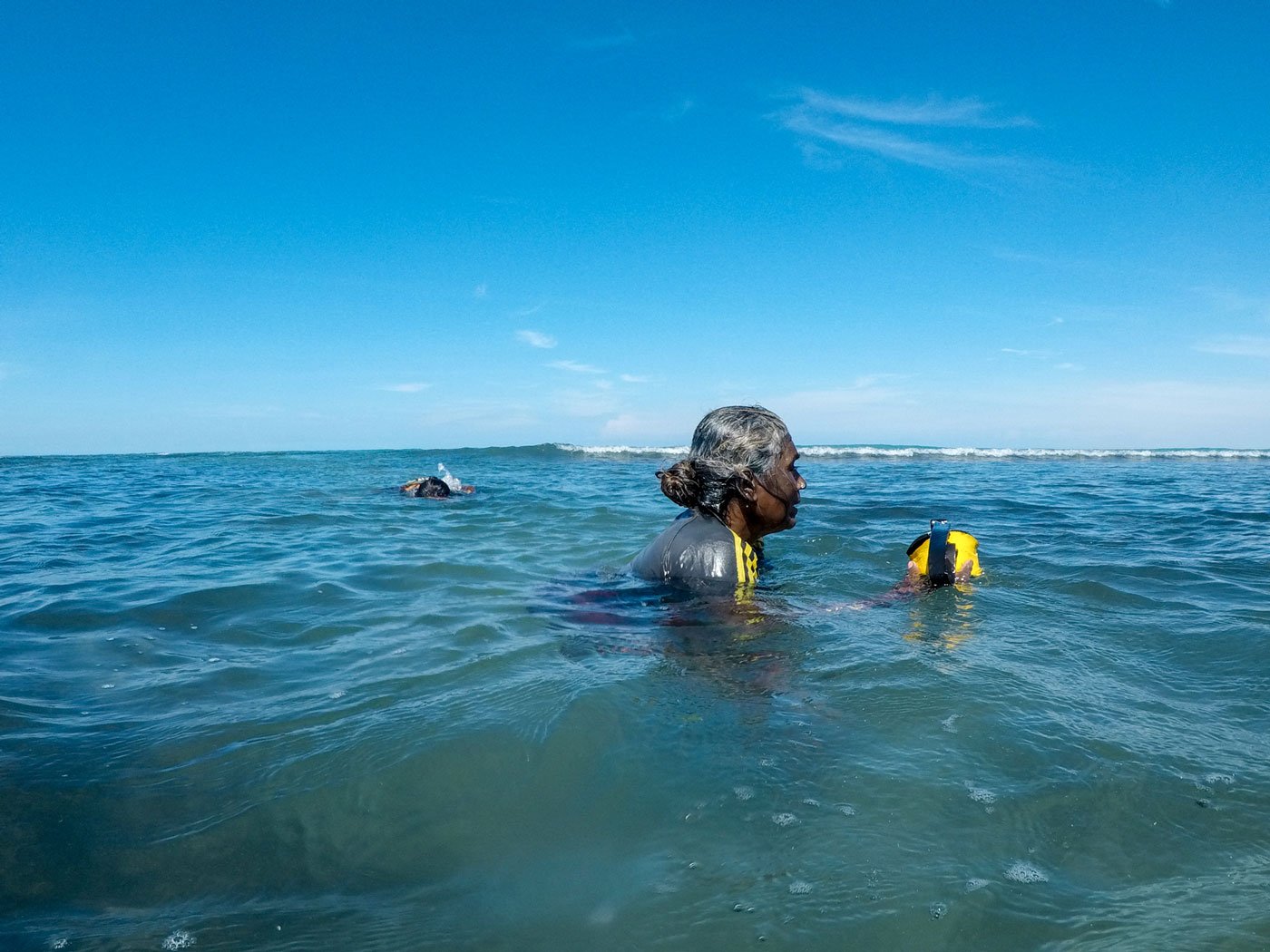
A seaweed harvester cleaning her gear after a dive
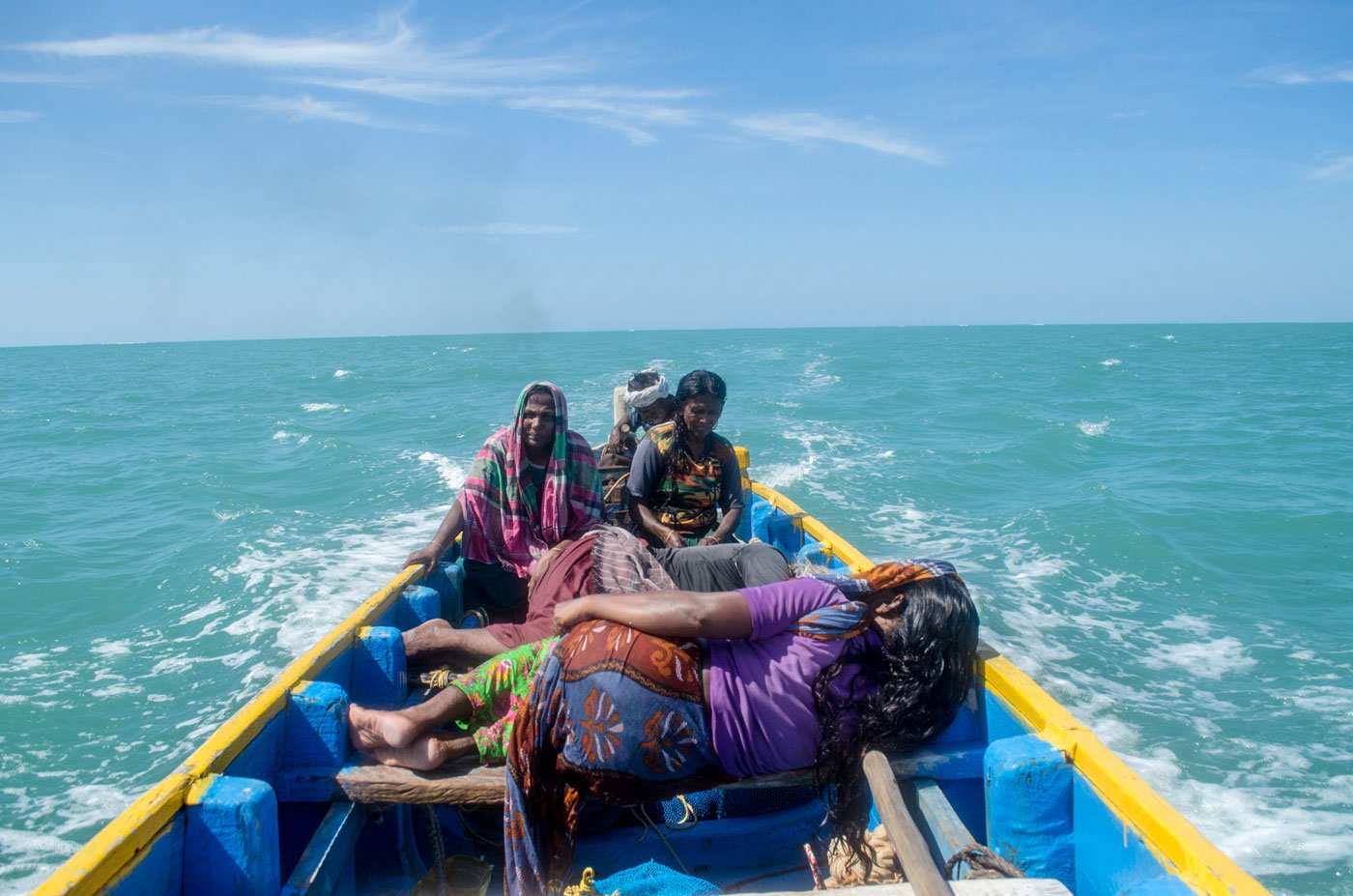
On the way back to
the shore, exhausted
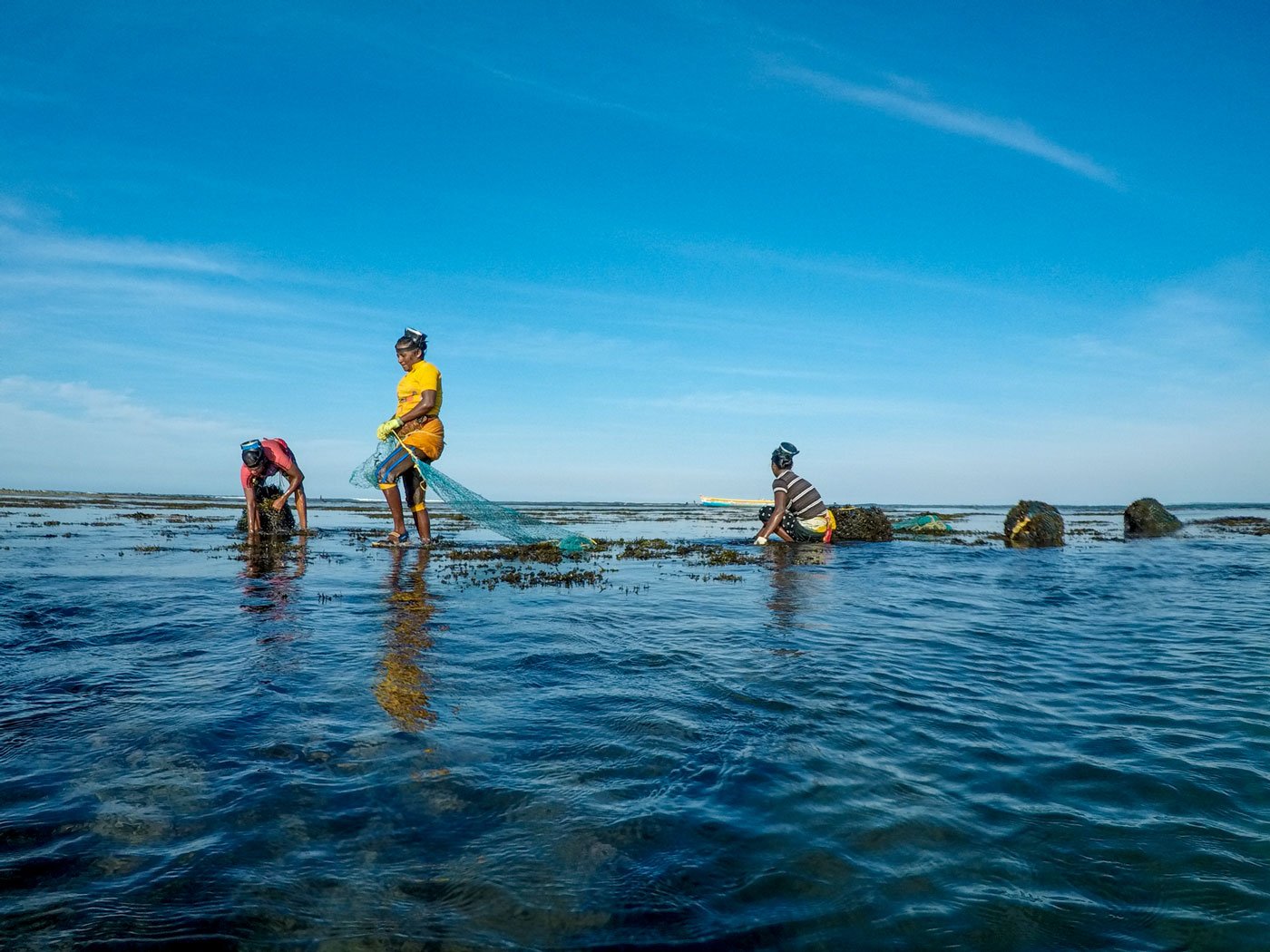
Dragging the seaweed that they have collected, on to the shore
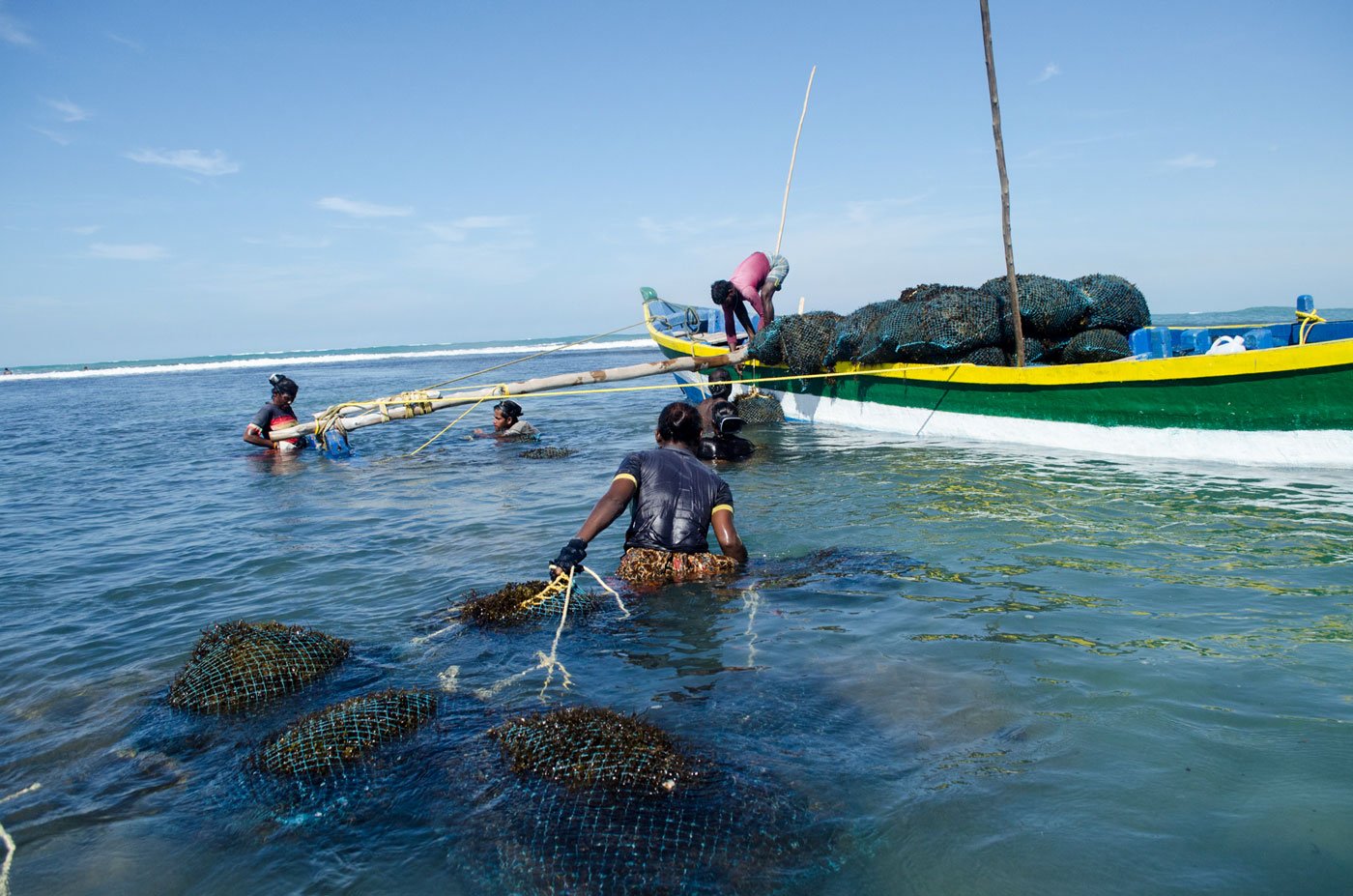
Others unloading the net bags full of day’s dark green
harvest
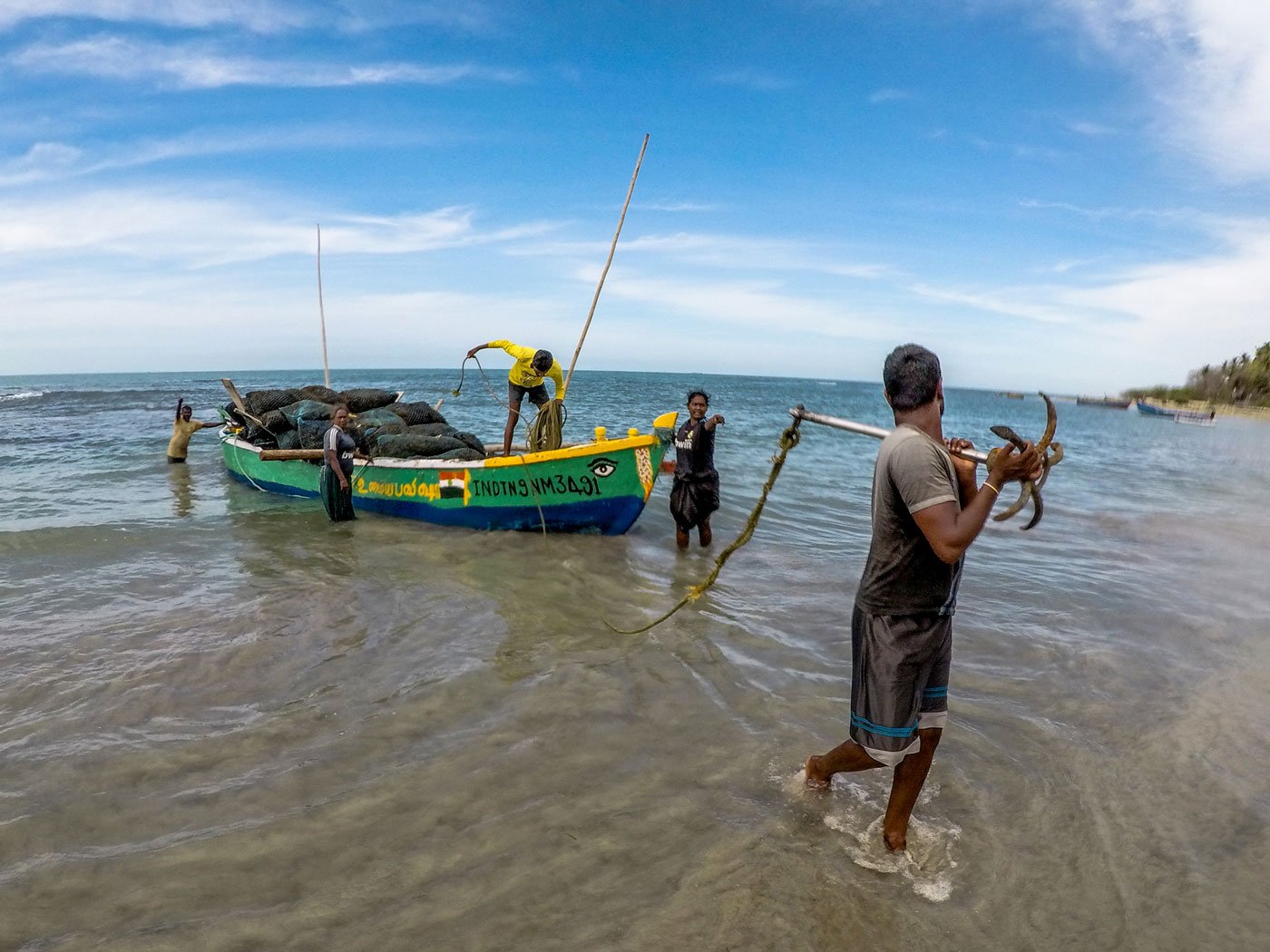
A small boat loaded with seaweed reaches the shore; a harvester guides
the anchor
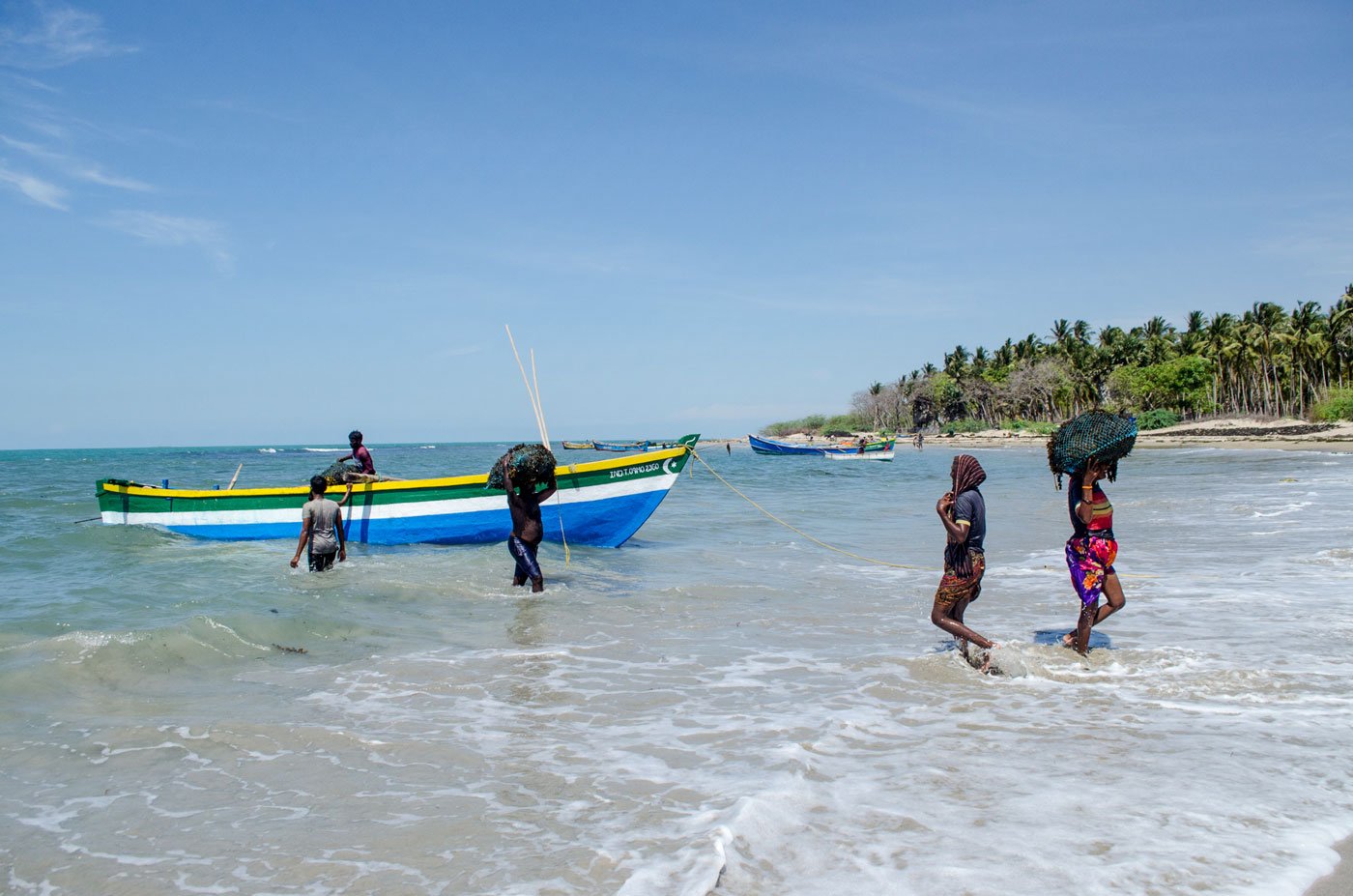
A group unloading the harvested seaweed
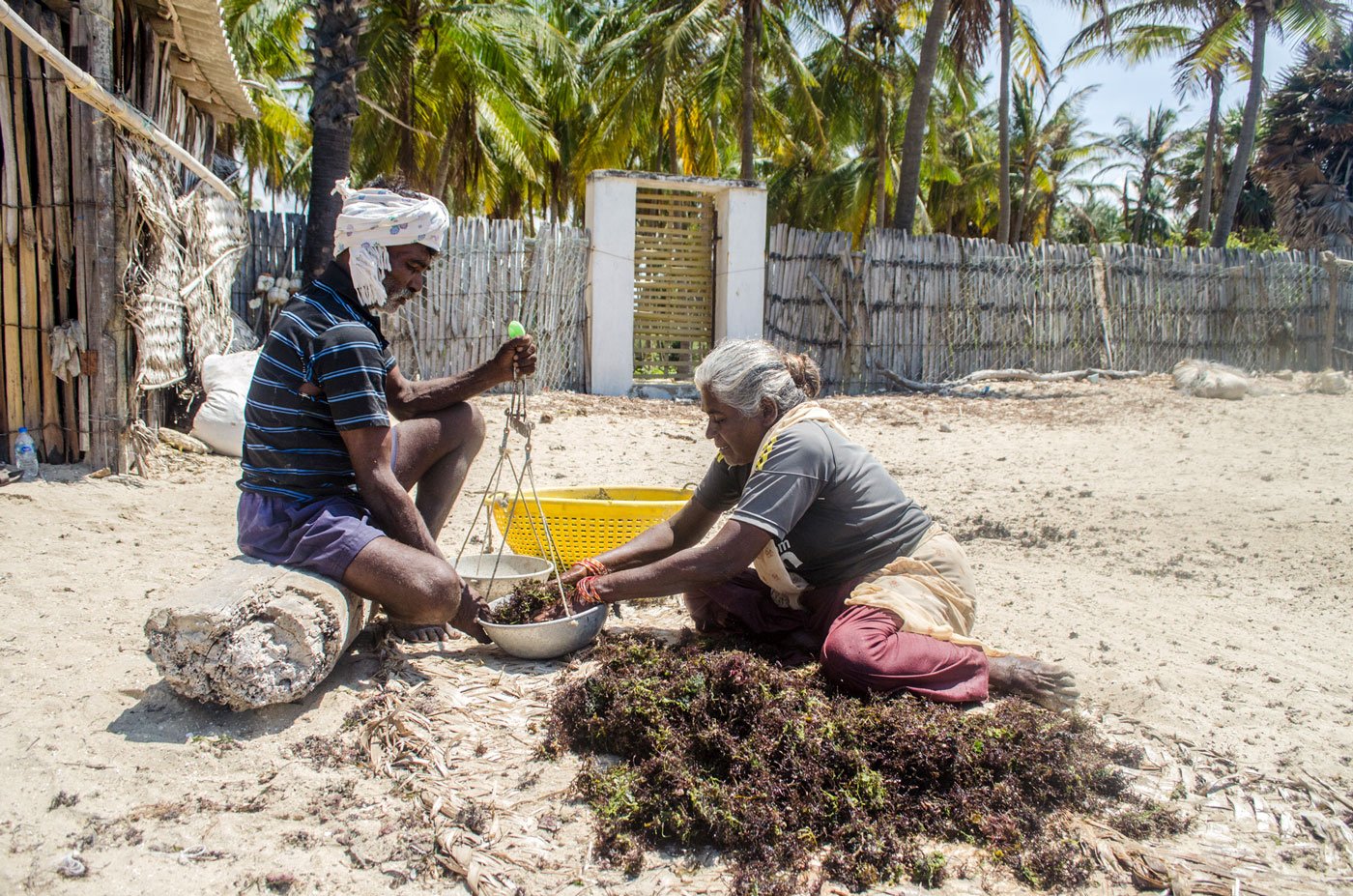
Weighing the day’s collection
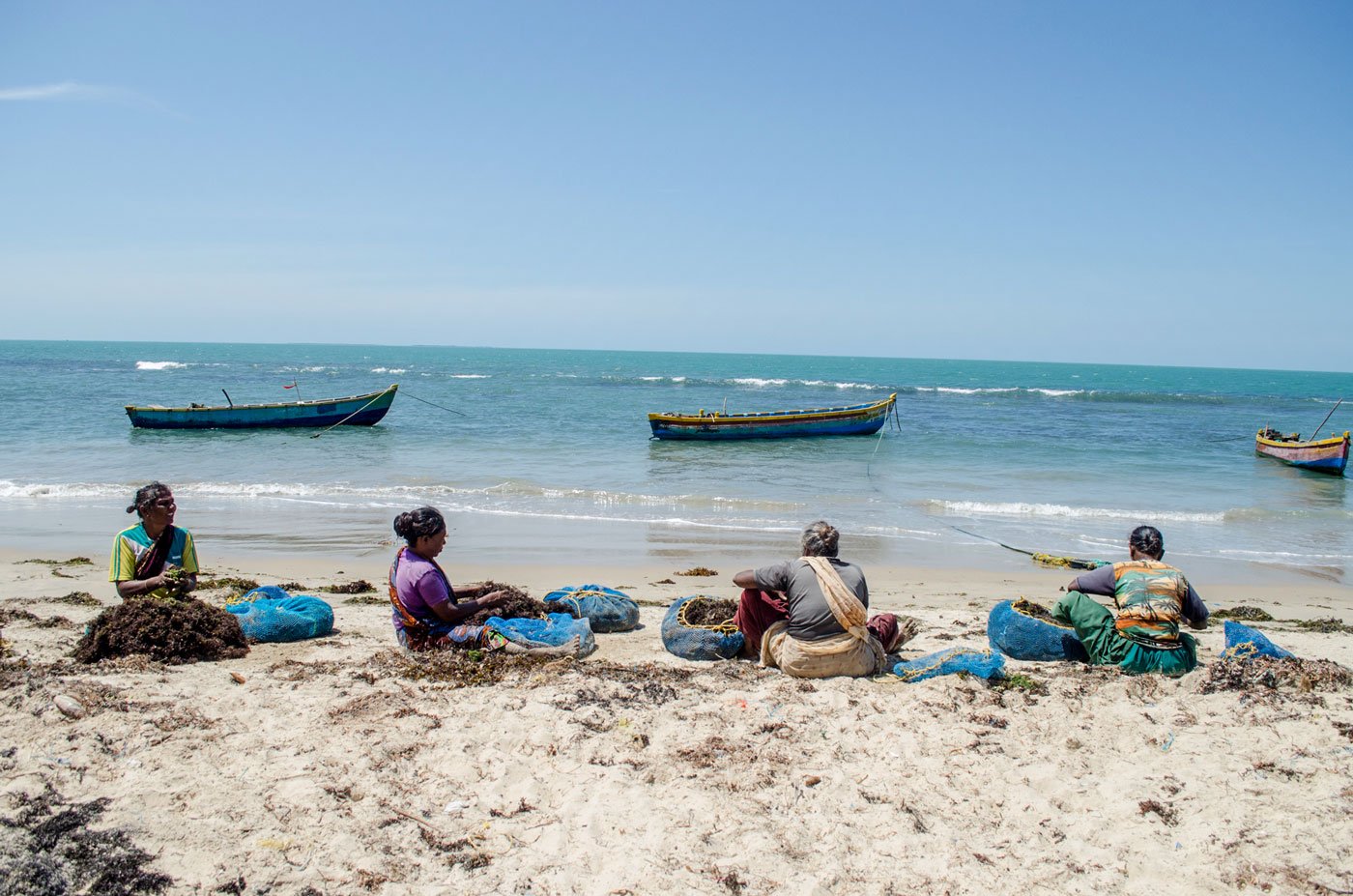
Preparing to dry the seaweed
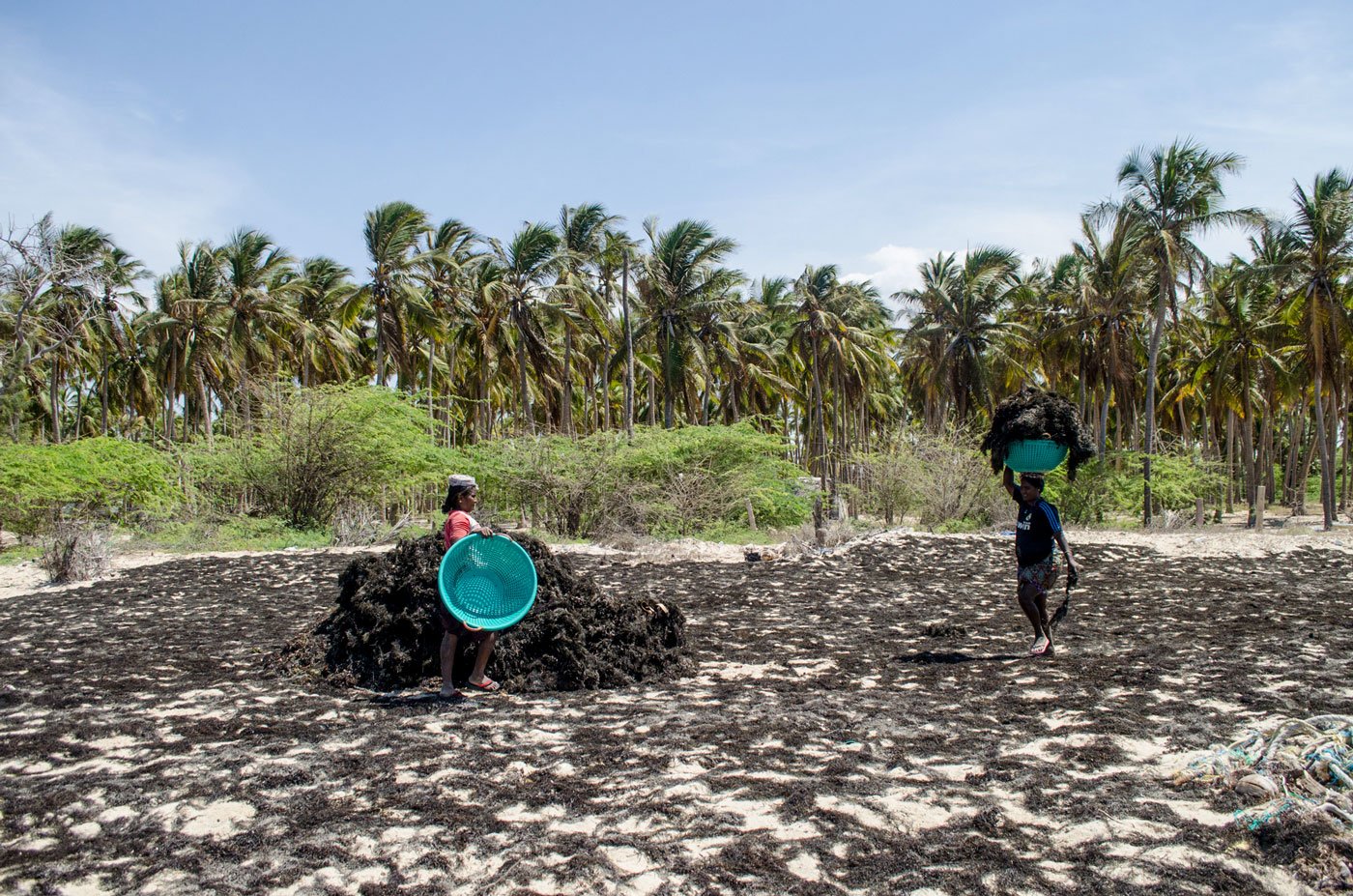
Others carrying their collection amid a carpet of
seaweed spread out to dry
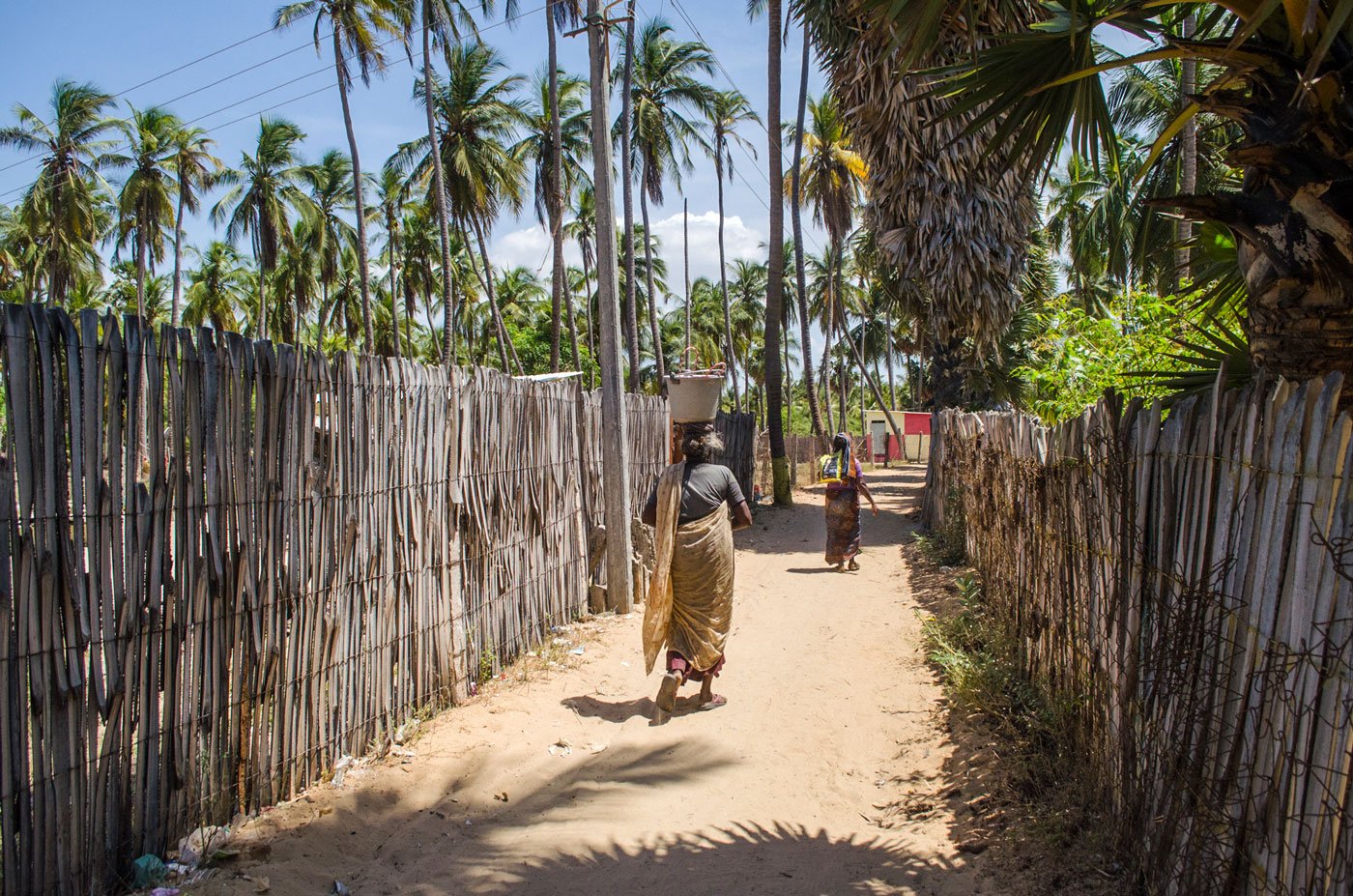
And then it’s back to
their homes on land, after hours at the sea and under water
Cover photo: A. Mookupori pulling the net bag. Now 35, she h as been diving for seaweed since she was eight years old. (Photo: M. Palani Kumar/PARI)
Many thanks to Senthalir S. for her generous help with this story .
PARI’s nationwide reporting project on climate change is part of a
UNDP-supported initiative to capture that phenomenon through the voices and
lived experience of ordinary people.
Want to republish this article? Please write to [email protected] with a cc to [email protected]
